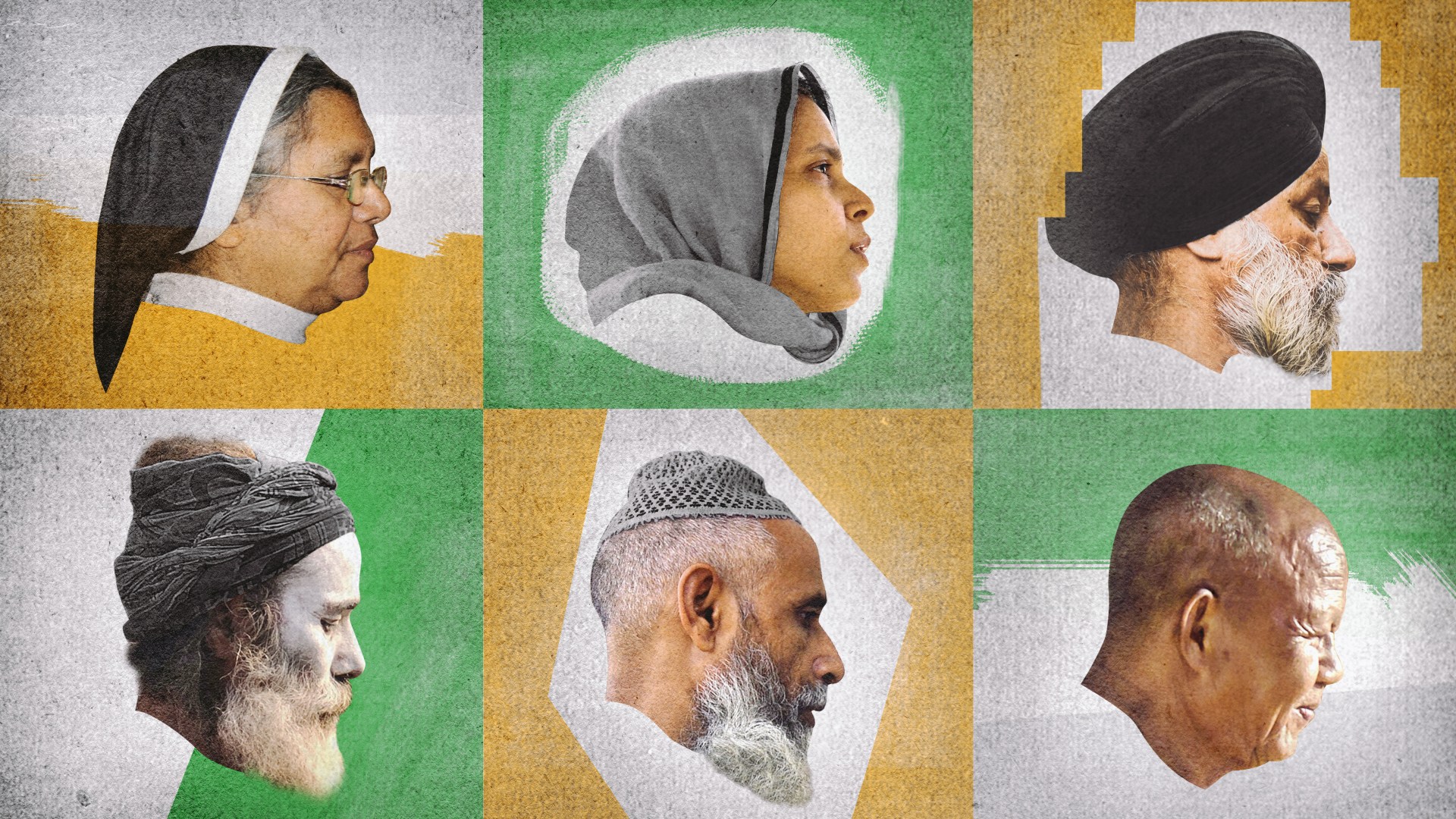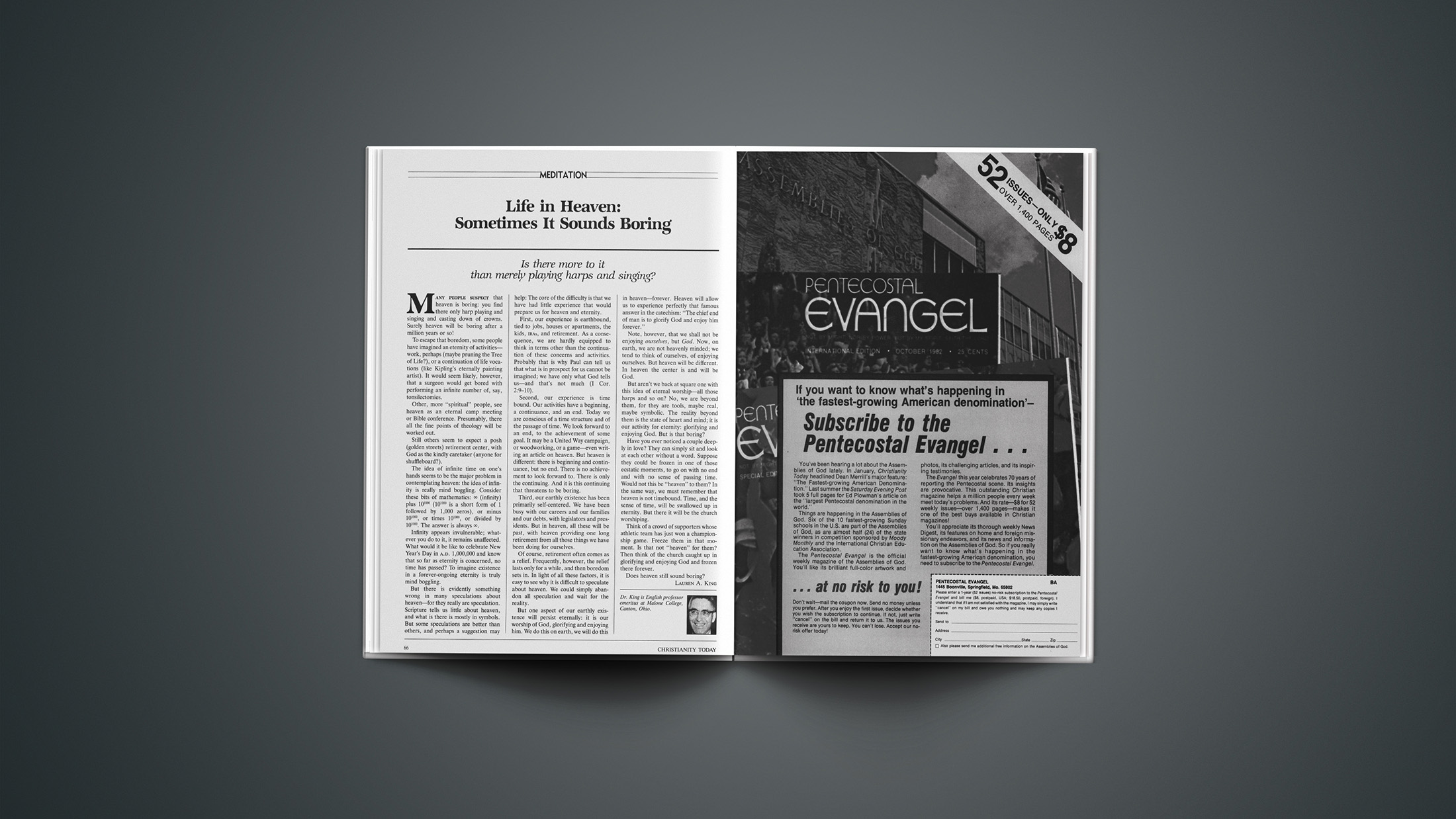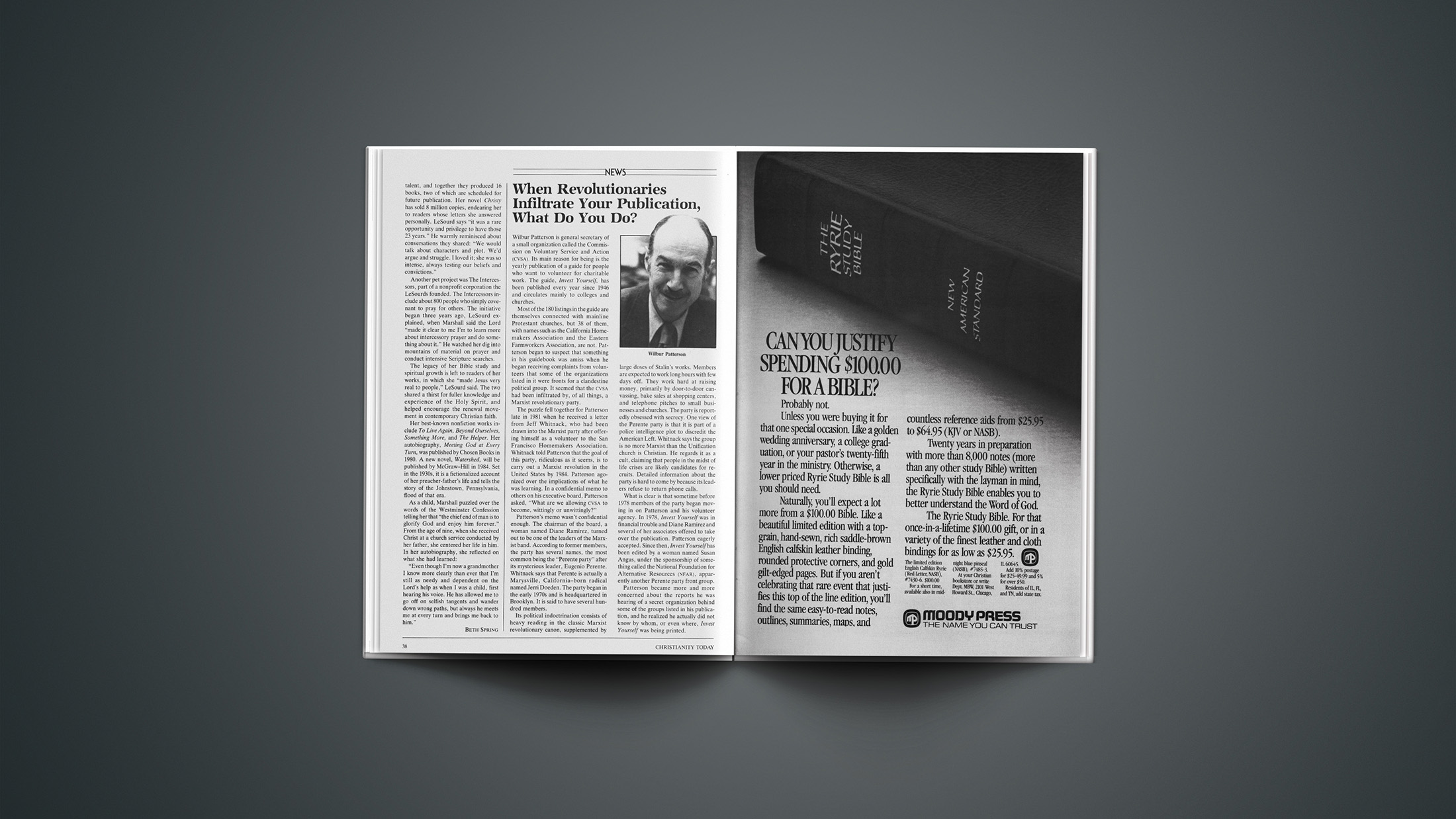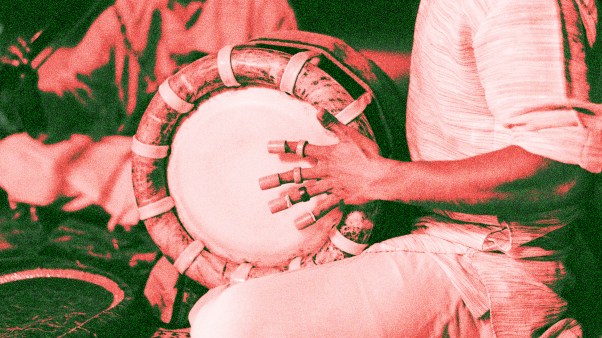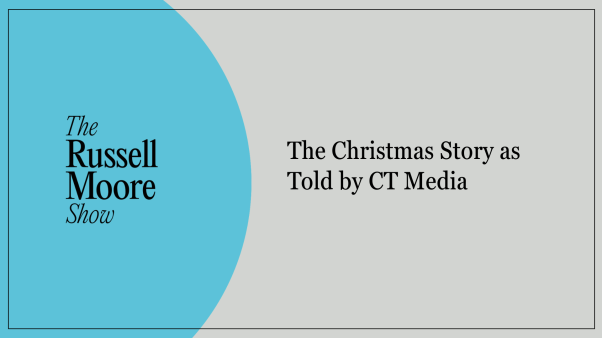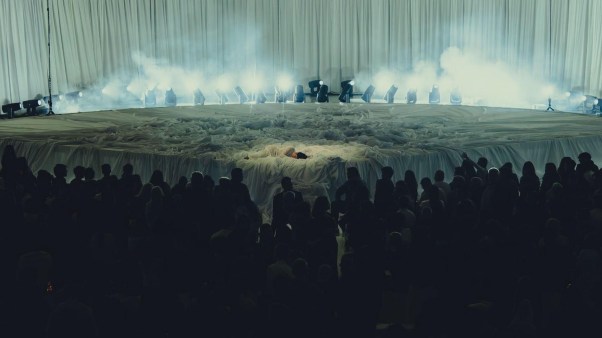A third of Hindus in India would not be willing to accept a Christian as a neighbor. Neither would a quarter of Indian Muslims or Sikhs.
Only a third of Indian Christians are very concerned about stopping inter-religious marriage, vs. two-thirds or more of Hindus, Muslims, and the general Indian population.
A quarter of Christians say religious diversity harms India, while about half say it benefits the country.
A third of Indian Christians identify as Catholics and half identify with Protestant denominations. A third of Christians identify as members of Scheduled Castes, often called Dalits (and formerly the pejorative untouchables).
Almost all Indian Christians are very proud to be Indian, and three-quarters agree that Indian culture is superior to others.
These are among the findings of “Religion in India: Tolerance and Segregation,” a significant new report released today by the Pew Research Center. Its conclusion, in a sentence: “Indians say it is important to respect all religions, but major religious groups see little in common and want to live separately.”
For its “most comprehensive, in-depth exploration” ever of India, Pew surveyed almost 30,000 Indian adults nationwide, face to face across 17 languages, between November 2019 and March 2020 just before the COVID-19 pandemic hit the subcontinent. The resulting survey, weighted to India’s 2011 census, is “calculated to have covered 98 percent of Indians ages 18 and older and had an 86 percent national response rate.”
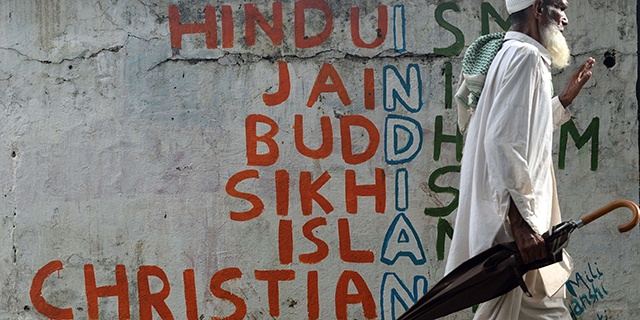
Pew surveyed 22,975 Indians who identify as Hindu, 3,336 who identify as Muslim, 1,782 who identify as Sikh, 1,011 who identify as Christian, 719 who identify as Buddhist, 109 who identify as Jain, and 67 who identify as belonging to another religion or as religiously unaffiliated.
Christians only number 2.4 percent of India’s population, according to the 2011 census. Yet given its massive 1.38 billion people, India still ranks among the top 25 countries with the most Christians in 2020 (between Poland and Peru), according to Pew’s demographic estimates.
Most Indian Christian leaders interviewed by CT agreed that Pew’s report offers quantitative validation of their lived experience. Though in a nation as vast and complex as India, many saw areas or subsets that deserved more scrutiny so that local differences could be made even more apparent.
The report is “quite comprehensive, timely, and strategic,” said Atul Aghamkar, an expert scholar on urban missions in India. He cautioned the findings may represent the views of urban Indians more than rural ones.
“Most findings will find agreement with anyone who lives here in India,” said C. B. Samuel, a respected Bible teacher and former executive director of EFICOR (formerly the Evangelical Fellowship of India Commission on Relief). He believes the report accurately captures religion and communal relations in India in general, and noted how Northeast India, West Bengal, and South Indian states stand out when scrutinized.
Overall the report is “fine and well done” while it “presents a view of the Hindi heartland of India as the main view,” said Canon Vinay Samuel, founder of the Oxford Center for Mission Studies (OCMS) and the Oxford Center for Religion and Public Life (OCRPL). “The study validates a lot of what one has known over the years, and that is encouraging.”
Archbishop Felix Anthony Machado, general secretary of the Catholic Bishops Conference of India and a leader in interreligious dialogue—which he described as “the need of the hour”—said the findings “reflect the reality” of India in general.
The report “covered a wide range of issues pertinent to the country,” said Finny Philip, an Indian board member of the Lausanne Movement, but he wished that tribal religions had been surveyed alongside the six main faiths. Having long worked in India’s tribal belt, for him the survey “failed to capture the rural heart of India” where caste segregation runs deep.
John Dayal, a Delhi-based Christian political analyst and cofounder and past secretary general of the All India Christian Council, credited the report for its “good coverage of cultural issues” and said its findings were “almost on the dot” regarding intermarriage and “closest to the reality” on housing matters, which “will be of use in social action to diffuse tensions.”
But he also said the report failed to fully capture the “extreme polarization” caused by the recent election campaigns of Hindu nationalists and the resulting Islamophobia which “now permeates all aspects of national intuitional and public life.”
Tensions over increasing Hindu nationalism in India have caused the nation to climb the ranks of persecution watchdogs in recent years. Open Doors ranks India at No. 10 on its 2021 World Watch List of the 50 countries where it’s hardest to be a Christian. The US Commission on International Religious Freedom recommends India be added to the State Department’s list of Countries of Particular Concern. Pew itself calculates that India has the highest level of social hostilities regarding religion among the world’s 25 most-populous countries, as well as one of the higher levels of government restrictions.
Yet Pew found that most Indians value religious pluralism and tolerance and feel very free to practice their faith, noting:
“More than 70 years after India became free from colonial rule, Indians generally feel their country has lived up to one of its post-independence ideals: a society where followers of many religions can live and practice freely.
…
Indians see religious tolerance as a central part of who they are as a nation. Across the major religious groups, most people say it is very important to respect all religions to be ‘truly Indian.’ And tolerance is a religious as well as civic value: Indians are united in the view that respecting other religions is a very important part of what it means to be a member of their own religious community.”
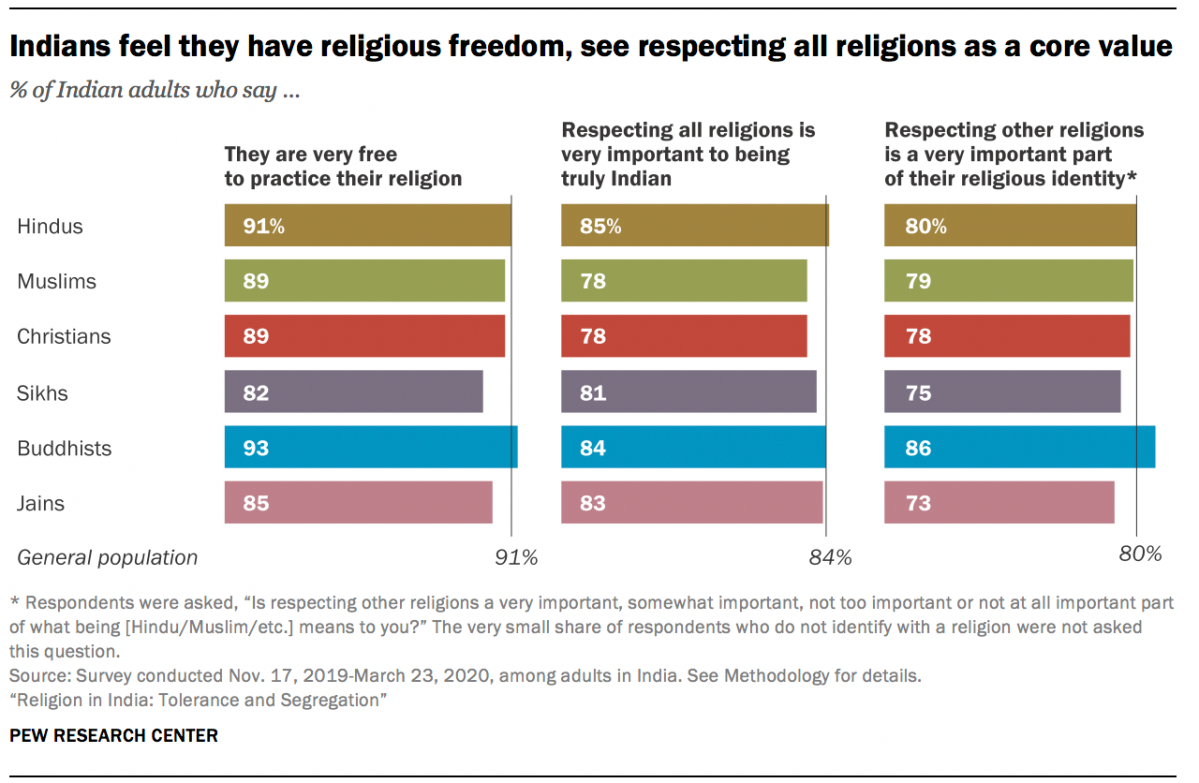 I Get That Flighty FeelingWhen David wrote that “the lines” had fallen to him ‘in pleasant places,’ he was obviously not talking about the airlines. Or haven’t you tried to make plane reservations lately?My wife and I had to be in Los Angeles, so I phoned the travel agent to discover what flights were available and how much the trip would cost. In order to be on time for our meeting, she said we would have to leave at 5:30 A.M., change planes twice in Denver, and pay a figure that got higher the longer I talked with her. I think she had an adding machine attached to her computer.“If you leave on a Tuesday,” she said in that consoling voice, “I can cut off your fare. No—sorry! That rule applies only to conventioneers who use carry-on luggage. Let me see—” I broke in: “I can’t leave on a Tuesday. It has to be a Wednesday.”“Is there any possibility you can get your firm to change the dates of the meeting? If you visit the World’s Fair en route, we give you 0 in play money to use as you please.”“I don’t want to visit the World’s Fair! Suppose we leave the night before? What flights are available?”“The night before—let me see. Oh, we have a dinner flight—no, sorry! That’s been canceled. If you and your wife can drive to Kansas City—”“I don’t want to drive to Kansas City! I live miles from Kansas City! I want to fly to Los Angeles, spend one day there, and then fly home!”“It’s too bad you can’t stay there a week. We have a fabulous plan that includes a visit to the Badlands of South Dakota as well as a tour of the Disneyland parking lot. It’s great for people who watch for license plates.”Trying to lift the conversation to a higher plane, I asked, “Just tell me what flights are available on Wednesday, what they cost, and when they leave. Maybe I can take out a loan or pawn my luggage.”“Well, if you won’t have any luggage, sir, we have a very special deal—no, that’s been canceled. If you and your wife’s combined ages totals more than 150, we can—”“They probably will total that by the time I get these reservations! Look, forget the whole thing. I’ll see if we can mail ourselves to Los Angeles.”“Oh, we have a marvelous overnight package service! Now, if you and your wife have a total weight—”Forgive me, but I gently placed the receiver on the cradle.EUTYCHUSCopyright FrustrationThree cheers for “God Gave Me a Song: Copyright Restrictions Took It Away” [Feb. 4], The current trend in Christian music copyright restrictions has made me wonder if there is a special translation of the Bible within the industry with hitherto unknown scriptural parentheses. For example: “All Scripture is inspired by God and profitable (if you first set it to music and copyright it).” “But to each one is given the manifestation of the Spirit for the common good (and if you can turn a buck in the process, so much the better).” And, “… speaking to one another in psalms (royalties to King David payable through his trust fund), and hymns (always properly prefaced by ‘permission granted for use in this particular conversation only’) and spiritual songs (permission to copyright granted by the Holy Spirit), singing (all the way to the bank)”!REV. ED MOOREEvangelical Free Church of NewarkFremont, Calif.Time For AcceptancePerhaps it is time for us to put aside our paranoia as well as our suspicion of esoteric motivation and just accept the new breath of liberating air at Harvard with appreciation and Christian humility. I find million-dollar rationale rather difficult to identify in Harvard’s recent appointment to a Merrill Fellowship of a relatively unknown missionary [myself] who ministers in Bangladesh with a small mission that is within the orbit of the unassailably evangelical Interdenominational Foreign Missions Association (IFMA).PHIL PARSHALLInternational Christian FellowshipLivonia, Mich.I suppose we should be pleased that an institution such as Harvard University is showing such an interest in evangelical scholarship, but there is a danger unmentioned in the various responses to Dr. Martin’s article. That danger is found in any faculty that permits a broad spectrum of theological opinion. Evangelicals are such because they believe the Bible. God warns us about the cancer of heresy, and tells us clearly what treatment the body of Christ must use to maintain spiritual health.We cannot expect our precious evangelical faith to remain healthy if our teachers cannot identify as cancerous the latest theological heresy. If I read Scripture correctly, I am called to hold to the sure word as taught, not be a creative theological innovator.REV. WILLIAM D. MCCOLLEYBellewood Presbyterian ChurchBellevue, Wash.If the evangelical movement is as strong as all indicators seem to show, if evangelical scholarship is as sound and respectable as an increasing number of nonevangelical scholars seem to recognize it to be, if the evangelical experience is as challenging and transforming as we profess it to be, then evangelicals should welcome the Harvard experiment—even on Harvard’s terms!M. ROBERT MULHOLLAND, JR.Asbury Theological SeminaryWilmore, Ky.Witness Or Stumblingblock?I believe Dr. Olshan in “Should We Live Like the Amish?” [Feb. 4] presented a somewhat romanticized view of the Amish. He points to their practices as a silent witness to the vitality and Anabaptist heritage of their Christianity. He didn’t mention, though, that those practices can also be a snare to the faith of the Amish themselves, and a stumblingblock to outsiders. One has to recognize the Amish for what they are: fellow sinners saved not by the particular form of institutionalized piety accepted in our little corner of Christianity, but, like the rest of us, by the blood of Jesus alone. To my knowledge that fact is rarely, if ever, articulated by the Amish to the community at large.PAT NIEDERHAUSBluffton, Ind.Misleading HeadingYour news article on the U.S. Center for World Mission [Jan. 21] is greatly appreciated; it is sensitive and balanced. Perhaps it was only at the last moment that the heading became misleading.First, it refers to “Ralph Winter’s Mission Center.” This gives me credit I do not deserve, and to me, at least, it seems to downplay the role of 300 mature people who work here every day. More embarrassing to me is the statement in the heading, “His ‘unreached people’ strategy seems to be taking hold …” Your readers must not fail to know that this strategy is neither my invention nor monopoly. It is a major trend. We have no more created the ‘unreached people’ concept than an incubator creates eggs.RALPH D. WINTERU.S. Center for World MissionPasadena, Calif.Freeze Or Fry?Kenneth Kantzer’s editorial “What Shall We Do About the Nuclear Problem?” [Jan. 21] clearly explores the ethics involved and wisely warns Christians against engaging in fads. Could it be that the nuclear freeze movement is verging on becoming a fad?There is much evidence to lead one to believe that the nuclear freeze idea is a public relations coup, born in Russia, that has, through Communist ingenuity, taken root in America. Its acceptance as “gospel” by many concerned Christians, and by millions of people of good will at large, is based on the false assumption that we only have two choices: freeze or fry.REV. ROBERT GORDON GRANTChristian VoicePacific Grove, Calif.Kantzer’s solution to the nuclear problem is neither “moral” nor “rational”; pragmatic perhaps, but not rational and certainly not moral. He moves illogically from the question of dying for something to the supposed right of killing for something. He also makes the mistake of equating tactical nuclear weapons with strategic ones, and says “tactical nuclear weapons are the only deterrent against the vast and impressive Russian military establishment.” The question at hand, however, concerns the massive destructive power of our strategic forces (ICBMs, SLBMs, etc.) not battle-tactical weapons.It seems Kantzer is caught up in the “Red scare” interpretation of Soviet activity, one that is being questioned by many internationalists in the free world. Hence, he is unable to consider creative and cooperative alternatives in our negotiations with the Russians.Similarly, he claims nuclear weapons have been the deterrent that alone has kept the peace for 30 years. Aside from the single-cause fallacy of such an assertion, he fails to see that his main argument is essentially utilitarian, hence he avoids the normative question altogether. The question is not when but whether nuclear weapons should ever be used.CHARLES E. MOOREDenver Conservative BaptistTheological SeminaryDenver, Colo.Two-Pronged ProtestI read with interest and support Menahem Ben Hayim’s article, “The Remnant in Israel Today” [Jan. 21]. The “two-pronged protest” he describes can also be found in similar communities in the United States.The main reason for the tension lies in the failure on the part of the synagogue and church to understand what the Messianic Jews hold as sacred, and to appreciate the cultural, sociological, and historical roots from which we descend. These roots are the basis for our unique theological perspectives and distinctive expression of faith. It is time for the church to rejoice in this rather than fear a reconstruction of the “dividing wall” which has been demolished by Messiah Jesus.Church leaders ought to consider the multitude of church denominations and affiliations that exist as potential “dividing walls” of their own, before attempting to remove the “speck” of Jewishness out of the eyes of Messianic Jews. The Jewish community, on the other hand, must realize that no matter how hard it might try to ignore us, Messianic Jews simply will not go away. Messianic Jews and leaders of the Jewish community must dialogue with one another.GARY DERECHINSKYBeth Sar Shalom Messianic CenterBrookline, Mass.I recently returned from a prolonged stay in Israel designed to investigate the possibility of immigrating there as an American Hebrew Christian. I found that the “two-pronged protest” against church and synagogue described in your article was merely heightened during this time. I have experienced the same struggle here in the United States ever since coming to faith in Jesus the Messiah.SANDRA BATDICKLos Angeles, Calif.
I Get That Flighty FeelingWhen David wrote that “the lines” had fallen to him ‘in pleasant places,’ he was obviously not talking about the airlines. Or haven’t you tried to make plane reservations lately?My wife and I had to be in Los Angeles, so I phoned the travel agent to discover what flights were available and how much the trip would cost. In order to be on time for our meeting, she said we would have to leave at 5:30 A.M., change planes twice in Denver, and pay a figure that got higher the longer I talked with her. I think she had an adding machine attached to her computer.“If you leave on a Tuesday,” she said in that consoling voice, “I can cut off your fare. No—sorry! That rule applies only to conventioneers who use carry-on luggage. Let me see—” I broke in: “I can’t leave on a Tuesday. It has to be a Wednesday.”“Is there any possibility you can get your firm to change the dates of the meeting? If you visit the World’s Fair en route, we give you 0 in play money to use as you please.”“I don’t want to visit the World’s Fair! Suppose we leave the night before? What flights are available?”“The night before—let me see. Oh, we have a dinner flight—no, sorry! That’s been canceled. If you and your wife can drive to Kansas City—”“I don’t want to drive to Kansas City! I live miles from Kansas City! I want to fly to Los Angeles, spend one day there, and then fly home!”“It’s too bad you can’t stay there a week. We have a fabulous plan that includes a visit to the Badlands of South Dakota as well as a tour of the Disneyland parking lot. It’s great for people who watch for license plates.”Trying to lift the conversation to a higher plane, I asked, “Just tell me what flights are available on Wednesday, what they cost, and when they leave. Maybe I can take out a loan or pawn my luggage.”“Well, if you won’t have any luggage, sir, we have a very special deal—no, that’s been canceled. If you and your wife’s combined ages totals more than 150, we can—”“They probably will total that by the time I get these reservations! Look, forget the whole thing. I’ll see if we can mail ourselves to Los Angeles.”“Oh, we have a marvelous overnight package service! Now, if you and your wife have a total weight—”Forgive me, but I gently placed the receiver on the cradle.EUTYCHUSCopyright FrustrationThree cheers for “God Gave Me a Song: Copyright Restrictions Took It Away” [Feb. 4], The current trend in Christian music copyright restrictions has made me wonder if there is a special translation of the Bible within the industry with hitherto unknown scriptural parentheses. For example: “All Scripture is inspired by God and profitable (if you first set it to music and copyright it).” “But to each one is given the manifestation of the Spirit for the common good (and if you can turn a buck in the process, so much the better).” And, “… speaking to one another in psalms (royalties to King David payable through his trust fund), and hymns (always properly prefaced by ‘permission granted for use in this particular conversation only’) and spiritual songs (permission to copyright granted by the Holy Spirit), singing (all the way to the bank)”!REV. ED MOOREEvangelical Free Church of NewarkFremont, Calif.Time For AcceptancePerhaps it is time for us to put aside our paranoia as well as our suspicion of esoteric motivation and just accept the new breath of liberating air at Harvard with appreciation and Christian humility. I find million-dollar rationale rather difficult to identify in Harvard’s recent appointment to a Merrill Fellowship of a relatively unknown missionary [myself] who ministers in Bangladesh with a small mission that is within the orbit of the unassailably evangelical Interdenominational Foreign Missions Association (IFMA).PHIL PARSHALLInternational Christian FellowshipLivonia, Mich.I suppose we should be pleased that an institution such as Harvard University is showing such an interest in evangelical scholarship, but there is a danger unmentioned in the various responses to Dr. Martin’s article. That danger is found in any faculty that permits a broad spectrum of theological opinion. Evangelicals are such because they believe the Bible. God warns us about the cancer of heresy, and tells us clearly what treatment the body of Christ must use to maintain spiritual health.We cannot expect our precious evangelical faith to remain healthy if our teachers cannot identify as cancerous the latest theological heresy. If I read Scripture correctly, I am called to hold to the sure word as taught, not be a creative theological innovator.REV. WILLIAM D. MCCOLLEYBellewood Presbyterian ChurchBellevue, Wash.If the evangelical movement is as strong as all indicators seem to show, if evangelical scholarship is as sound and respectable as an increasing number of nonevangelical scholars seem to recognize it to be, if the evangelical experience is as challenging and transforming as we profess it to be, then evangelicals should welcome the Harvard experiment—even on Harvard’s terms!M. ROBERT MULHOLLAND, JR.Asbury Theological SeminaryWilmore, Ky.Witness Or Stumblingblock?I believe Dr. Olshan in “Should We Live Like the Amish?” [Feb. 4] presented a somewhat romanticized view of the Amish. He points to their practices as a silent witness to the vitality and Anabaptist heritage of their Christianity. He didn’t mention, though, that those practices can also be a snare to the faith of the Amish themselves, and a stumblingblock to outsiders. One has to recognize the Amish for what they are: fellow sinners saved not by the particular form of institutionalized piety accepted in our little corner of Christianity, but, like the rest of us, by the blood of Jesus alone. To my knowledge that fact is rarely, if ever, articulated by the Amish to the community at large.PAT NIEDERHAUSBluffton, Ind.Misleading HeadingYour news article on the U.S. Center for World Mission [Jan. 21] is greatly appreciated; it is sensitive and balanced. Perhaps it was only at the last moment that the heading became misleading.First, it refers to “Ralph Winter’s Mission Center.” This gives me credit I do not deserve, and to me, at least, it seems to downplay the role of 300 mature people who work here every day. More embarrassing to me is the statement in the heading, “His ‘unreached people’ strategy seems to be taking hold …” Your readers must not fail to know that this strategy is neither my invention nor monopoly. It is a major trend. We have no more created the ‘unreached people’ concept than an incubator creates eggs.RALPH D. WINTERU.S. Center for World MissionPasadena, Calif.Freeze Or Fry?Kenneth Kantzer’s editorial “What Shall We Do About the Nuclear Problem?” [Jan. 21] clearly explores the ethics involved and wisely warns Christians against engaging in fads. Could it be that the nuclear freeze movement is verging on becoming a fad?There is much evidence to lead one to believe that the nuclear freeze idea is a public relations coup, born in Russia, that has, through Communist ingenuity, taken root in America. Its acceptance as “gospel” by many concerned Christians, and by millions of people of good will at large, is based on the false assumption that we only have two choices: freeze or fry.REV. ROBERT GORDON GRANTChristian VoicePacific Grove, Calif.Kantzer’s solution to the nuclear problem is neither “moral” nor “rational”; pragmatic perhaps, but not rational and certainly not moral. He moves illogically from the question of dying for something to the supposed right of killing for something. He also makes the mistake of equating tactical nuclear weapons with strategic ones, and says “tactical nuclear weapons are the only deterrent against the vast and impressive Russian military establishment.” The question at hand, however, concerns the massive destructive power of our strategic forces (ICBMs, SLBMs, etc.) not battle-tactical weapons.It seems Kantzer is caught up in the “Red scare” interpretation of Soviet activity, one that is being questioned by many internationalists in the free world. Hence, he is unable to consider creative and cooperative alternatives in our negotiations with the Russians.Similarly, he claims nuclear weapons have been the deterrent that alone has kept the peace for 30 years. Aside from the single-cause fallacy of such an assertion, he fails to see that his main argument is essentially utilitarian, hence he avoids the normative question altogether. The question is not when but whether nuclear weapons should ever be used.CHARLES E. MOOREDenver Conservative BaptistTheological SeminaryDenver, Colo.Two-Pronged ProtestI read with interest and support Menahem Ben Hayim’s article, “The Remnant in Israel Today” [Jan. 21]. The “two-pronged protest” he describes can also be found in similar communities in the United States.The main reason for the tension lies in the failure on the part of the synagogue and church to understand what the Messianic Jews hold as sacred, and to appreciate the cultural, sociological, and historical roots from which we descend. These roots are the basis for our unique theological perspectives and distinctive expression of faith. It is time for the church to rejoice in this rather than fear a reconstruction of the “dividing wall” which has been demolished by Messiah Jesus.Church leaders ought to consider the multitude of church denominations and affiliations that exist as potential “dividing walls” of their own, before attempting to remove the “speck” of Jewishness out of the eyes of Messianic Jews. The Jewish community, on the other hand, must realize that no matter how hard it might try to ignore us, Messianic Jews simply will not go away. Messianic Jews and leaders of the Jewish community must dialogue with one another.GARY DERECHINSKYBeth Sar Shalom Messianic CenterBrookline, Mass.I recently returned from a prolonged stay in Israel designed to investigate the possibility of immigrating there as an American Hebrew Christian. I found that the “two-pronged protest” against church and synagogue described in your article was merely heightened during this time. I have experienced the same struggle here in the United States ever since coming to faith in Jesus the Messiah.SANDRA BATDICKLos Angeles, Calif.
However, most Indians say they are “very different” from Indians who practice other religions. For example, only 1 in 5 Hindus (19%) say they have a lot in common with Christians in India, while 3 in 5 Hindus (59%) say they are very different. Meanwhile, 1 in 4 Christians (27%) say they have a lot in common with Hindus in India, while 3 in 5 (58%) say they are very different.
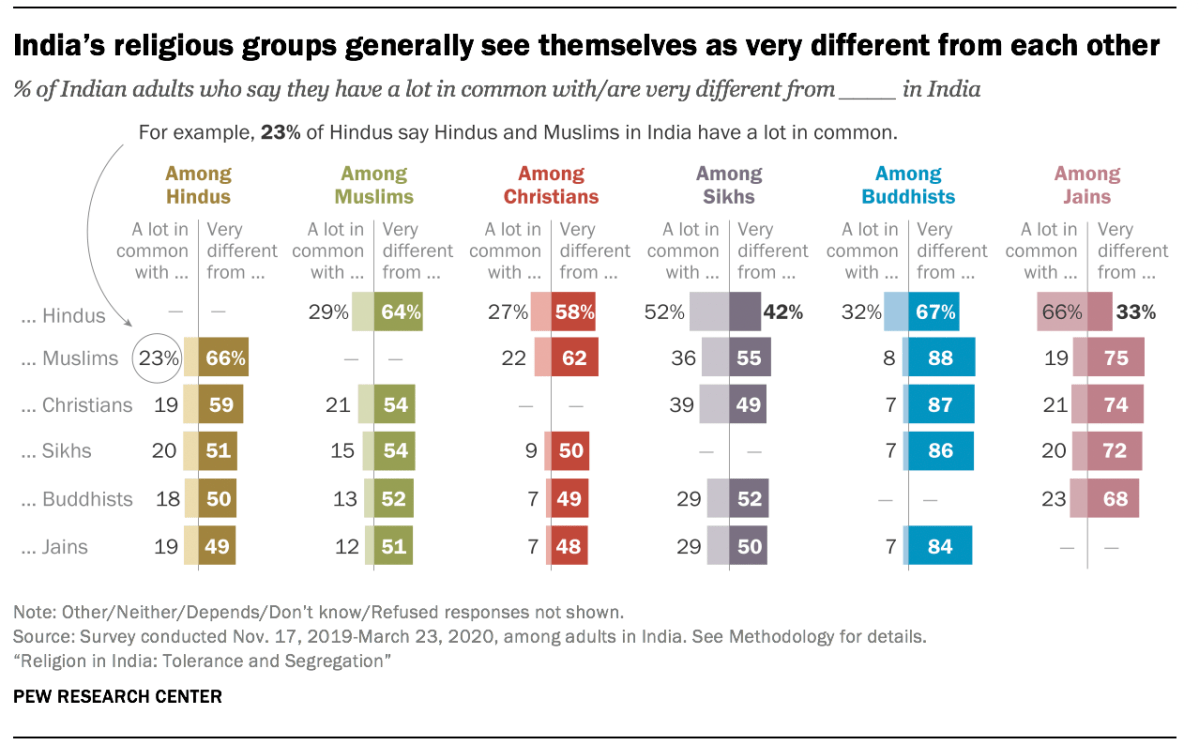
Pew found that interreligious marriage in India is rare, as is conversion. Yet the issues remain highly sensitive, as seen in the continued spread of anti-conversion laws at the state level and recurring allegations of “love jihad.”
Only a third of Indian Christians say it is very important to stop Christians from marrying non-Christians. This is a much lower level of concern than in every other religious group, including the two-thirds of Hindus and of Indians in general who see stopping religious intermarriage as a high priority. Muslims register the most concern, with about 4 out of 5 concerned about members marrying outside their faith.
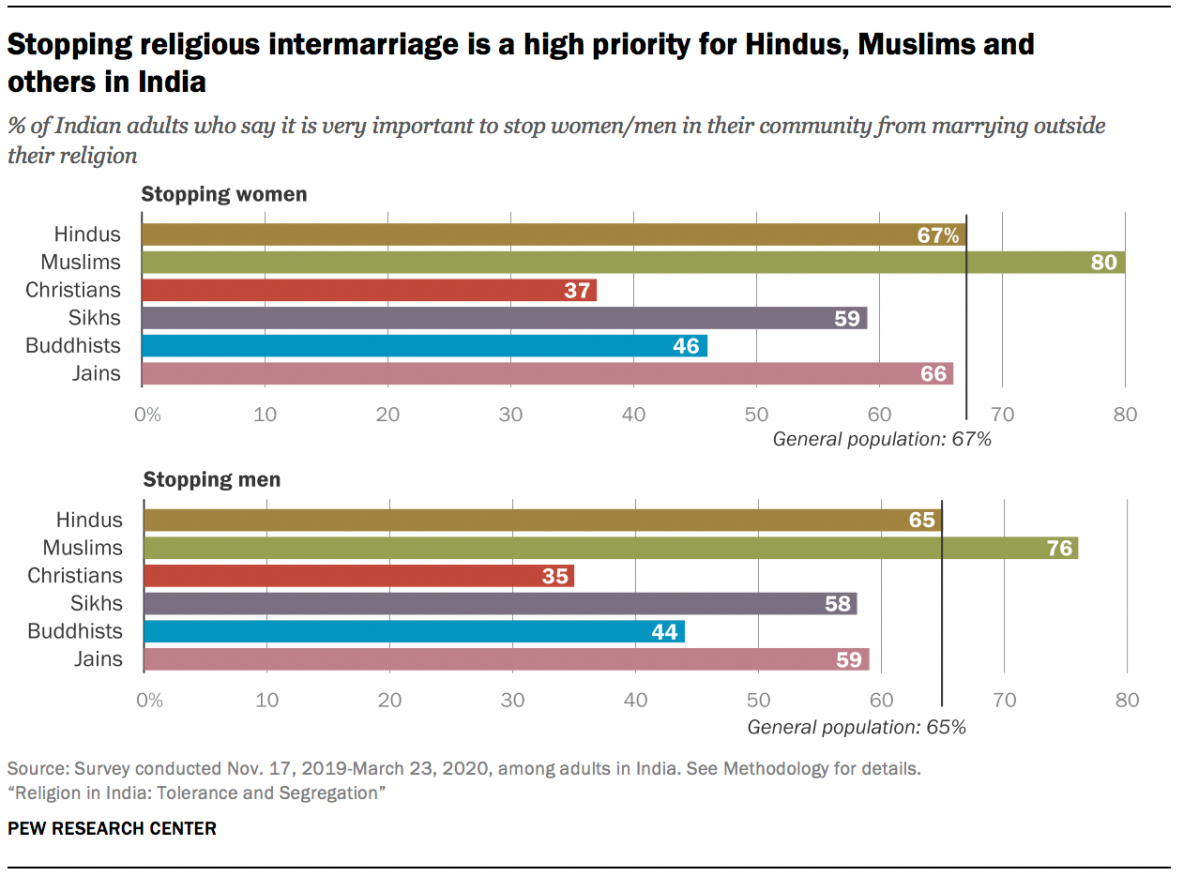 I Get That Flighty FeelingWhen David wrote that “the lines” had fallen to him ‘in pleasant places,’ he was obviously not talking about the airlines. Or haven’t you tried to make plane reservations lately?My wife and I had to be in Los Angeles, so I phoned the travel agent to discover what flights were available and how much the trip would cost. In order to be on time for our meeting, she said we would have to leave at 5:30 A.M., change planes twice in Denver, and pay a figure that got higher the longer I talked with her. I think she had an adding machine attached to her computer.“If you leave on a Tuesday,” she said in that consoling voice, “I can cut off your fare. No—sorry! That rule applies only to conventioneers who use carry-on luggage. Let me see—” I broke in: “I can’t leave on a Tuesday. It has to be a Wednesday.”“Is there any possibility you can get your firm to change the dates of the meeting? If you visit the World’s Fair en route, we give you 0 in play money to use as you please.”“I don’t want to visit the World’s Fair! Suppose we leave the night before? What flights are available?”“The night before—let me see. Oh, we have a dinner flight—no, sorry! That’s been canceled. If you and your wife can drive to Kansas City—”“I don’t want to drive to Kansas City! I live miles from Kansas City! I want to fly to Los Angeles, spend one day there, and then fly home!”“It’s too bad you can’t stay there a week. We have a fabulous plan that includes a visit to the Badlands of South Dakota as well as a tour of the Disneyland parking lot. It’s great for people who watch for license plates.”Trying to lift the conversation to a higher plane, I asked, “Just tell me what flights are available on Wednesday, what they cost, and when they leave. Maybe I can take out a loan or pawn my luggage.”“Well, if you won’t have any luggage, sir, we have a very special deal—no, that’s been canceled. If you and your wife’s combined ages totals more than 150, we can—”“They probably will total that by the time I get these reservations! Look, forget the whole thing. I’ll see if we can mail ourselves to Los Angeles.”“Oh, we have a marvelous overnight package service! Now, if you and your wife have a total weight—”Forgive me, but I gently placed the receiver on the cradle.EUTYCHUSCopyright FrustrationThree cheers for “God Gave Me a Song: Copyright Restrictions Took It Away” [Feb. 4], The current trend in Christian music copyright restrictions has made me wonder if there is a special translation of the Bible within the industry with hitherto unknown scriptural parentheses. For example: “All Scripture is inspired by God and profitable (if you first set it to music and copyright it).” “But to each one is given the manifestation of the Spirit for the common good (and if you can turn a buck in the process, so much the better).” And, “… speaking to one another in psalms (royalties to King David payable through his trust fund), and hymns (always properly prefaced by ‘permission granted for use in this particular conversation only’) and spiritual songs (permission to copyright granted by the Holy Spirit), singing (all the way to the bank)”!REV. ED MOOREEvangelical Free Church of NewarkFremont, Calif.Time For AcceptancePerhaps it is time for us to put aside our paranoia as well as our suspicion of esoteric motivation and just accept the new breath of liberating air at Harvard with appreciation and Christian humility. I find million-dollar rationale rather difficult to identify in Harvard’s recent appointment to a Merrill Fellowship of a relatively unknown missionary [myself] who ministers in Bangladesh with a small mission that is within the orbit of the unassailably evangelical Interdenominational Foreign Missions Association (IFMA).PHIL PARSHALLInternational Christian FellowshipLivonia, Mich.I suppose we should be pleased that an institution such as Harvard University is showing such an interest in evangelical scholarship, but there is a danger unmentioned in the various responses to Dr. Martin’s article. That danger is found in any faculty that permits a broad spectrum of theological opinion. Evangelicals are such because they believe the Bible. God warns us about the cancer of heresy, and tells us clearly what treatment the body of Christ must use to maintain spiritual health.We cannot expect our precious evangelical faith to remain healthy if our teachers cannot identify as cancerous the latest theological heresy. If I read Scripture correctly, I am called to hold to the sure word as taught, not be a creative theological innovator.REV. WILLIAM D. MCCOLLEYBellewood Presbyterian ChurchBellevue, Wash.If the evangelical movement is as strong as all indicators seem to show, if evangelical scholarship is as sound and respectable as an increasing number of nonevangelical scholars seem to recognize it to be, if the evangelical experience is as challenging and transforming as we profess it to be, then evangelicals should welcome the Harvard experiment—even on Harvard’s terms!M. ROBERT MULHOLLAND, JR.Asbury Theological SeminaryWilmore, Ky.Witness Or Stumblingblock?I believe Dr. Olshan in “Should We Live Like the Amish?” [Feb. 4] presented a somewhat romanticized view of the Amish. He points to their practices as a silent witness to the vitality and Anabaptist heritage of their Christianity. He didn’t mention, though, that those practices can also be a snare to the faith of the Amish themselves, and a stumblingblock to outsiders. One has to recognize the Amish for what they are: fellow sinners saved not by the particular form of institutionalized piety accepted in our little corner of Christianity, but, like the rest of us, by the blood of Jesus alone. To my knowledge that fact is rarely, if ever, articulated by the Amish to the community at large.PAT NIEDERHAUSBluffton, Ind.Misleading HeadingYour news article on the U.S. Center for World Mission [Jan. 21] is greatly appreciated; it is sensitive and balanced. Perhaps it was only at the last moment that the heading became misleading.First, it refers to “Ralph Winter’s Mission Center.” This gives me credit I do not deserve, and to me, at least, it seems to downplay the role of 300 mature people who work here every day. More embarrassing to me is the statement in the heading, “His ‘unreached people’ strategy seems to be taking hold …” Your readers must not fail to know that this strategy is neither my invention nor monopoly. It is a major trend. We have no more created the ‘unreached people’ concept than an incubator creates eggs.RALPH D. WINTERU.S. Center for World MissionPasadena, Calif.Freeze Or Fry?Kenneth Kantzer’s editorial “What Shall We Do About the Nuclear Problem?” [Jan. 21] clearly explores the ethics involved and wisely warns Christians against engaging in fads. Could it be that the nuclear freeze movement is verging on becoming a fad?There is much evidence to lead one to believe that the nuclear freeze idea is a public relations coup, born in Russia, that has, through Communist ingenuity, taken root in America. Its acceptance as “gospel” by many concerned Christians, and by millions of people of good will at large, is based on the false assumption that we only have two choices: freeze or fry.REV. ROBERT GORDON GRANTChristian VoicePacific Grove, Calif.Kantzer’s solution to the nuclear problem is neither “moral” nor “rational”; pragmatic perhaps, but not rational and certainly not moral. He moves illogically from the question of dying for something to the supposed right of killing for something. He also makes the mistake of equating tactical nuclear weapons with strategic ones, and says “tactical nuclear weapons are the only deterrent against the vast and impressive Russian military establishment.” The question at hand, however, concerns the massive destructive power of our strategic forces (ICBMs, SLBMs, etc.) not battle-tactical weapons.It seems Kantzer is caught up in the “Red scare” interpretation of Soviet activity, one that is being questioned by many internationalists in the free world. Hence, he is unable to consider creative and cooperative alternatives in our negotiations with the Russians.Similarly, he claims nuclear weapons have been the deterrent that alone has kept the peace for 30 years. Aside from the single-cause fallacy of such an assertion, he fails to see that his main argument is essentially utilitarian, hence he avoids the normative question altogether. The question is not when but whether nuclear weapons should ever be used.CHARLES E. MOOREDenver Conservative BaptistTheological SeminaryDenver, Colo.Two-Pronged ProtestI read with interest and support Menahem Ben Hayim’s article, “The Remnant in Israel Today” [Jan. 21]. The “two-pronged protest” he describes can also be found in similar communities in the United States.The main reason for the tension lies in the failure on the part of the synagogue and church to understand what the Messianic Jews hold as sacred, and to appreciate the cultural, sociological, and historical roots from which we descend. These roots are the basis for our unique theological perspectives and distinctive expression of faith. It is time for the church to rejoice in this rather than fear a reconstruction of the “dividing wall” which has been demolished by Messiah Jesus.Church leaders ought to consider the multitude of church denominations and affiliations that exist as potential “dividing walls” of their own, before attempting to remove the “speck” of Jewishness out of the eyes of Messianic Jews. The Jewish community, on the other hand, must realize that no matter how hard it might try to ignore us, Messianic Jews simply will not go away. Messianic Jews and leaders of the Jewish community must dialogue with one another.GARY DERECHINSKYBeth Sar Shalom Messianic CenterBrookline, Mass.I recently returned from a prolonged stay in Israel designed to investigate the possibility of immigrating there as an American Hebrew Christian. I found that the “two-pronged protest” against church and synagogue described in your article was merely heightened during this time. I have experienced the same struggle here in the United States ever since coming to faith in Jesus the Messiah.SANDRA BATDICKLos Angeles, Calif.
I Get That Flighty FeelingWhen David wrote that “the lines” had fallen to him ‘in pleasant places,’ he was obviously not talking about the airlines. Or haven’t you tried to make plane reservations lately?My wife and I had to be in Los Angeles, so I phoned the travel agent to discover what flights were available and how much the trip would cost. In order to be on time for our meeting, she said we would have to leave at 5:30 A.M., change planes twice in Denver, and pay a figure that got higher the longer I talked with her. I think she had an adding machine attached to her computer.“If you leave on a Tuesday,” she said in that consoling voice, “I can cut off your fare. No—sorry! That rule applies only to conventioneers who use carry-on luggage. Let me see—” I broke in: “I can’t leave on a Tuesday. It has to be a Wednesday.”“Is there any possibility you can get your firm to change the dates of the meeting? If you visit the World’s Fair en route, we give you 0 in play money to use as you please.”“I don’t want to visit the World’s Fair! Suppose we leave the night before? What flights are available?”“The night before—let me see. Oh, we have a dinner flight—no, sorry! That’s been canceled. If you and your wife can drive to Kansas City—”“I don’t want to drive to Kansas City! I live miles from Kansas City! I want to fly to Los Angeles, spend one day there, and then fly home!”“It’s too bad you can’t stay there a week. We have a fabulous plan that includes a visit to the Badlands of South Dakota as well as a tour of the Disneyland parking lot. It’s great for people who watch for license plates.”Trying to lift the conversation to a higher plane, I asked, “Just tell me what flights are available on Wednesday, what they cost, and when they leave. Maybe I can take out a loan or pawn my luggage.”“Well, if you won’t have any luggage, sir, we have a very special deal—no, that’s been canceled. If you and your wife’s combined ages totals more than 150, we can—”“They probably will total that by the time I get these reservations! Look, forget the whole thing. I’ll see if we can mail ourselves to Los Angeles.”“Oh, we have a marvelous overnight package service! Now, if you and your wife have a total weight—”Forgive me, but I gently placed the receiver on the cradle.EUTYCHUSCopyright FrustrationThree cheers for “God Gave Me a Song: Copyright Restrictions Took It Away” [Feb. 4], The current trend in Christian music copyright restrictions has made me wonder if there is a special translation of the Bible within the industry with hitherto unknown scriptural parentheses. For example: “All Scripture is inspired by God and profitable (if you first set it to music and copyright it).” “But to each one is given the manifestation of the Spirit for the common good (and if you can turn a buck in the process, so much the better).” And, “… speaking to one another in psalms (royalties to King David payable through his trust fund), and hymns (always properly prefaced by ‘permission granted for use in this particular conversation only’) and spiritual songs (permission to copyright granted by the Holy Spirit), singing (all the way to the bank)”!REV. ED MOOREEvangelical Free Church of NewarkFremont, Calif.Time For AcceptancePerhaps it is time for us to put aside our paranoia as well as our suspicion of esoteric motivation and just accept the new breath of liberating air at Harvard with appreciation and Christian humility. I find million-dollar rationale rather difficult to identify in Harvard’s recent appointment to a Merrill Fellowship of a relatively unknown missionary [myself] who ministers in Bangladesh with a small mission that is within the orbit of the unassailably evangelical Interdenominational Foreign Missions Association (IFMA).PHIL PARSHALLInternational Christian FellowshipLivonia, Mich.I suppose we should be pleased that an institution such as Harvard University is showing such an interest in evangelical scholarship, but there is a danger unmentioned in the various responses to Dr. Martin’s article. That danger is found in any faculty that permits a broad spectrum of theological opinion. Evangelicals are such because they believe the Bible. God warns us about the cancer of heresy, and tells us clearly what treatment the body of Christ must use to maintain spiritual health.We cannot expect our precious evangelical faith to remain healthy if our teachers cannot identify as cancerous the latest theological heresy. If I read Scripture correctly, I am called to hold to the sure word as taught, not be a creative theological innovator.REV. WILLIAM D. MCCOLLEYBellewood Presbyterian ChurchBellevue, Wash.If the evangelical movement is as strong as all indicators seem to show, if evangelical scholarship is as sound and respectable as an increasing number of nonevangelical scholars seem to recognize it to be, if the evangelical experience is as challenging and transforming as we profess it to be, then evangelicals should welcome the Harvard experiment—even on Harvard’s terms!M. ROBERT MULHOLLAND, JR.Asbury Theological SeminaryWilmore, Ky.Witness Or Stumblingblock?I believe Dr. Olshan in “Should We Live Like the Amish?” [Feb. 4] presented a somewhat romanticized view of the Amish. He points to their practices as a silent witness to the vitality and Anabaptist heritage of their Christianity. He didn’t mention, though, that those practices can also be a snare to the faith of the Amish themselves, and a stumblingblock to outsiders. One has to recognize the Amish for what they are: fellow sinners saved not by the particular form of institutionalized piety accepted in our little corner of Christianity, but, like the rest of us, by the blood of Jesus alone. To my knowledge that fact is rarely, if ever, articulated by the Amish to the community at large.PAT NIEDERHAUSBluffton, Ind.Misleading HeadingYour news article on the U.S. Center for World Mission [Jan. 21] is greatly appreciated; it is sensitive and balanced. Perhaps it was only at the last moment that the heading became misleading.First, it refers to “Ralph Winter’s Mission Center.” This gives me credit I do not deserve, and to me, at least, it seems to downplay the role of 300 mature people who work here every day. More embarrassing to me is the statement in the heading, “His ‘unreached people’ strategy seems to be taking hold …” Your readers must not fail to know that this strategy is neither my invention nor monopoly. It is a major trend. We have no more created the ‘unreached people’ concept than an incubator creates eggs.RALPH D. WINTERU.S. Center for World MissionPasadena, Calif.Freeze Or Fry?Kenneth Kantzer’s editorial “What Shall We Do About the Nuclear Problem?” [Jan. 21] clearly explores the ethics involved and wisely warns Christians against engaging in fads. Could it be that the nuclear freeze movement is verging on becoming a fad?There is much evidence to lead one to believe that the nuclear freeze idea is a public relations coup, born in Russia, that has, through Communist ingenuity, taken root in America. Its acceptance as “gospel” by many concerned Christians, and by millions of people of good will at large, is based on the false assumption that we only have two choices: freeze or fry.REV. ROBERT GORDON GRANTChristian VoicePacific Grove, Calif.Kantzer’s solution to the nuclear problem is neither “moral” nor “rational”; pragmatic perhaps, but not rational and certainly not moral. He moves illogically from the question of dying for something to the supposed right of killing for something. He also makes the mistake of equating tactical nuclear weapons with strategic ones, and says “tactical nuclear weapons are the only deterrent against the vast and impressive Russian military establishment.” The question at hand, however, concerns the massive destructive power of our strategic forces (ICBMs, SLBMs, etc.) not battle-tactical weapons.It seems Kantzer is caught up in the “Red scare” interpretation of Soviet activity, one that is being questioned by many internationalists in the free world. Hence, he is unable to consider creative and cooperative alternatives in our negotiations with the Russians.Similarly, he claims nuclear weapons have been the deterrent that alone has kept the peace for 30 years. Aside from the single-cause fallacy of such an assertion, he fails to see that his main argument is essentially utilitarian, hence he avoids the normative question altogether. The question is not when but whether nuclear weapons should ever be used.CHARLES E. MOOREDenver Conservative BaptistTheological SeminaryDenver, Colo.Two-Pronged ProtestI read with interest and support Menahem Ben Hayim’s article, “The Remnant in Israel Today” [Jan. 21]. The “two-pronged protest” he describes can also be found in similar communities in the United States.The main reason for the tension lies in the failure on the part of the synagogue and church to understand what the Messianic Jews hold as sacred, and to appreciate the cultural, sociological, and historical roots from which we descend. These roots are the basis for our unique theological perspectives and distinctive expression of faith. It is time for the church to rejoice in this rather than fear a reconstruction of the “dividing wall” which has been demolished by Messiah Jesus.Church leaders ought to consider the multitude of church denominations and affiliations that exist as potential “dividing walls” of their own, before attempting to remove the “speck” of Jewishness out of the eyes of Messianic Jews. The Jewish community, on the other hand, must realize that no matter how hard it might try to ignore us, Messianic Jews simply will not go away. Messianic Jews and leaders of the Jewish community must dialogue with one another.GARY DERECHINSKYBeth Sar Shalom Messianic CenterBrookline, Mass.I recently returned from a prolonged stay in Israel designed to investigate the possibility of immigrating there as an American Hebrew Christian. I found that the “two-pronged protest” against church and synagogue described in your article was merely heightened during this time. I have experienced the same struggle here in the United States ever since coming to faith in Jesus the Messiah.SANDRA BATDICKLos Angeles, Calif.
Overall, 45 percent of Hindus accept having neighbors of all other religions. Yet an equal 45 percent are not willing to accept followers of at least one other religion.
For example, 31 percent of Hindus would not be willing to accept a Christian as a neighbor. Neither would 25 percent of Muslims or Sikhs. Jains were most likely not to accept Christian neighbors (47%), while Buddhists were least likely (17%).
Among Christians, only 1 in 10 would not be willing to accept a Hindu as a neighbor (11%). Meanwhile, 2 in 10 Christians would not accept neighbors who were Muslim (17%), Buddhist (21%), Sikh (22%), or Jain (22%). Overall, Christians were second only to Buddhists with registering the least discomfort with neighbors of other religions.
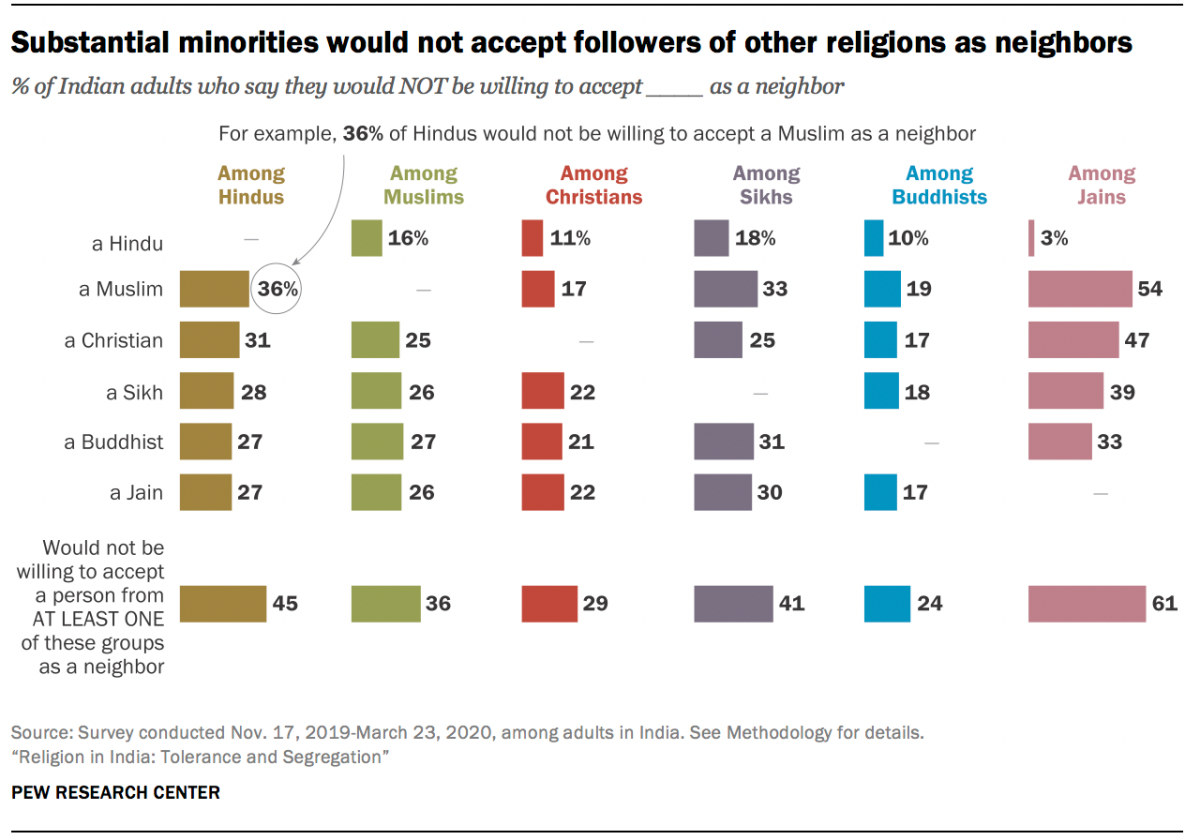 Is there more to it than merely playing harps and singing?Many people suspect that heaven is boring: you find there only harp playing and singing and casting down of crowns. Surely heaven will be boring after a million years or so!To escape that boredom, some people have imagined an eternity of activities—work, perhaps (maybe pruning the Tree of Life?), or a continuation of life vocations (like Kipling’s eternally painting artist). It would seem likely, however, that a surgeon would get bored with performing an infinite number of, say, tonsilectomies.Other, more “spiritual” people, see heaven as an eternal camp meeting or Bible conference. Presumably, there all the fine points of theology will be worked out.Still others seem to expect a posh (golden streets) retirement center, with God as the kindly caretaker (anyone for shuffleboard?).The idea of infinite time on one’s hands seems to be the major problem in contemplating heaven: the idea of infinity is really mind boggling. Consider these bits of mathematics: ∞ (infinity) plus 101000 (101000 is a short form of 1 followed by 1,000 zeros), or minus 101000, or times 101000, or divided by 101000. The answer is always ∞.Infinity appears invulnerable; whatever you do to it, it remains unaffected. What would it be like to celebrate New Year’s Day in A.D. 1,000,000 and know that so far as eternity is concerned, no time has passed? To imagine existence in a forever-ongoing eternity is truly mind boggling.But there is evidently something wrong in many speculations about heaven—for they really are speculation. Scripture tells us little about heaven, and what is there is mostly in symbols. But some speculations are better than others, and perhaps a suggestion may help: The core of the difficulty is that we have had little experience that would prepare us for heaven and eternity.First, our experience is earthbound, tied to jobs, houses or apartments, the kids, IRAS, and retirement. As a consequence, we are hardly equipped to think in terms other than the continuation of these concerns and activities. Probably that is why Paul can tell us that what is in prospect for us cannot be imagined; we have only what God tells us—and that’s not much (1 Cor. 2:9–10).Second, our experience is time bound. Our activities have a beginning, a continuance, and an end. Today we are conscious of a time structure and of the passage of time. We look forward to an end, to the achievement of some goal. It may be a United Way campaign, or woodworking, or a game—even writing an article on heaven. But heaven is different: there is beginning and continuance, but no end. There is no achievement to look forward to. There is only the continuing. And it is this continuing that threatens to be boring.Third, our earthly existence has been primarily self-centered. We have been busy with our careers and our families and our debts, with legislators and presidents. But in heaven, all these will be past, with heaven providing one long retirement from all those things we have been doing for ourselves.Of course, retirement often comes as a relief. Frequently, however, the relief lasts only for a while, and then boredom sets in. In light of all these factors, it is easy to see why it is difficult to speculate about heaven. We could simply abandon all speculation and wait for the reality.But one aspect of our earthly existence will persist eternally: it is our worship of God, glorifying and enjoying him. We do this on earth, we will do this in heaven—forever. Heaven will allow us to experience perfectly that famous answer in the catechism: “The chief end of man is to glorify God and enjoy him forever.”Note, however, that we shall not be enjoying ourselves, but God. Now, on earth, we are not heavenly minded; we tend to think of ourselves, of enjoying ourselves. But heaven will be different. In heaven the center is and will be God.But aren’t we back at square one with this idea of eternal worship—all those harps and so on? No, we are beyond them, for they are tools, maybe real, maybe symbolic. The reality beyond them is the state of heart and mind; it is our activity for eternity: glorifying and enjoying God. But is that boring?Have you ever noticed a couple deeply in love? They can simply sit and look at each other without a word. Suppose they could be frozen in one of those ecstatic moments, to go on with no end and with no sense of passing time. Would not this be “heaven” to them? In the same way, we must remember that heaven is not timebound. Time, and the sense of time, will be swallowed up in eternity. But there it will be the church worshiping.Think of a crowd of supporters whose athletic team has just won a championship game. Freeze them in that moment. Is that not “heaven” for them? Then think of the church caught up in glorifying and enjoying God and frozen there forever.Does heaven still sound boring?LAUREN A. KINGDr. King is English professor emeritus at Malone College, Canton, Ohio.
Is there more to it than merely playing harps and singing?Many people suspect that heaven is boring: you find there only harp playing and singing and casting down of crowns. Surely heaven will be boring after a million years or so!To escape that boredom, some people have imagined an eternity of activities—work, perhaps (maybe pruning the Tree of Life?), or a continuation of life vocations (like Kipling’s eternally painting artist). It would seem likely, however, that a surgeon would get bored with performing an infinite number of, say, tonsilectomies.Other, more “spiritual” people, see heaven as an eternal camp meeting or Bible conference. Presumably, there all the fine points of theology will be worked out.Still others seem to expect a posh (golden streets) retirement center, with God as the kindly caretaker (anyone for shuffleboard?).The idea of infinite time on one’s hands seems to be the major problem in contemplating heaven: the idea of infinity is really mind boggling. Consider these bits of mathematics: ∞ (infinity) plus 101000 (101000 is a short form of 1 followed by 1,000 zeros), or minus 101000, or times 101000, or divided by 101000. The answer is always ∞.Infinity appears invulnerable; whatever you do to it, it remains unaffected. What would it be like to celebrate New Year’s Day in A.D. 1,000,000 and know that so far as eternity is concerned, no time has passed? To imagine existence in a forever-ongoing eternity is truly mind boggling.But there is evidently something wrong in many speculations about heaven—for they really are speculation. Scripture tells us little about heaven, and what is there is mostly in symbols. But some speculations are better than others, and perhaps a suggestion may help: The core of the difficulty is that we have had little experience that would prepare us for heaven and eternity.First, our experience is earthbound, tied to jobs, houses or apartments, the kids, IRAS, and retirement. As a consequence, we are hardly equipped to think in terms other than the continuation of these concerns and activities. Probably that is why Paul can tell us that what is in prospect for us cannot be imagined; we have only what God tells us—and that’s not much (1 Cor. 2:9–10).Second, our experience is time bound. Our activities have a beginning, a continuance, and an end. Today we are conscious of a time structure and of the passage of time. We look forward to an end, to the achievement of some goal. It may be a United Way campaign, or woodworking, or a game—even writing an article on heaven. But heaven is different: there is beginning and continuance, but no end. There is no achievement to look forward to. There is only the continuing. And it is this continuing that threatens to be boring.Third, our earthly existence has been primarily self-centered. We have been busy with our careers and our families and our debts, with legislators and presidents. But in heaven, all these will be past, with heaven providing one long retirement from all those things we have been doing for ourselves.Of course, retirement often comes as a relief. Frequently, however, the relief lasts only for a while, and then boredom sets in. In light of all these factors, it is easy to see why it is difficult to speculate about heaven. We could simply abandon all speculation and wait for the reality.But one aspect of our earthly existence will persist eternally: it is our worship of God, glorifying and enjoying him. We do this on earth, we will do this in heaven—forever. Heaven will allow us to experience perfectly that famous answer in the catechism: “The chief end of man is to glorify God and enjoy him forever.”Note, however, that we shall not be enjoying ourselves, but God. Now, on earth, we are not heavenly minded; we tend to think of ourselves, of enjoying ourselves. But heaven will be different. In heaven the center is and will be God.But aren’t we back at square one with this idea of eternal worship—all those harps and so on? No, we are beyond them, for they are tools, maybe real, maybe symbolic. The reality beyond them is the state of heart and mind; it is our activity for eternity: glorifying and enjoying God. But is that boring?Have you ever noticed a couple deeply in love? They can simply sit and look at each other without a word. Suppose they could be frozen in one of those ecstatic moments, to go on with no end and with no sense of passing time. Would not this be “heaven” to them? In the same way, we must remember that heaven is not timebound. Time, and the sense of time, will be swallowed up in eternity. But there it will be the church worshiping.Think of a crowd of supporters whose athletic team has just won a championship game. Freeze them in that moment. Is that not “heaven” for them? Then think of the church caught up in glorifying and enjoying God and frozen there forever.Does heaven still sound boring?LAUREN A. KINGDr. King is English professor emeritus at Malone College, Canton, Ohio.
“Indians, then, simultaneously express enthusiasm for religious tolerance and a consistent preference for keeping their religious communities in segregated spheres—they live together separately,” wrote Pew researchers. “These two sentiments may seem paradoxical, but for many Indians they are not.” They conclude that most Indians prefer not a national “melting pot” of religions but “a country more like a patchwork fabric, with clear lines between groups.”
“Most Indians delude themselves and believe they respect other religions. In practice, this is not true,” OCRPL’s Samuel told CT. “The gap between espoused belief and actual practice could be more starkly highlighted.
“Religion continues to be important as a marker of identity, and that is encouraging in some ways,” he said. “But it is also true that religion has little influence on one’s ethical life in India. That does not appear in the study.”
Richard Howell, principal at the Caleb Institute of Theology and past general secretary of the Evangelical Fellowship of India, cautioned that the report could “create an impression all is well” but an “in-depth analysis of the consequences of segregated living and its impact on lower castes” is needed.
About half of Indians think religious diversity benefits India, while a quarter think it harms the country. Among Indian Christians, 26 percent say religious diversity harms India, while 44 percent say it benefits the country. Christians were the least likely of any religious group to say that religious diversity benefits India.
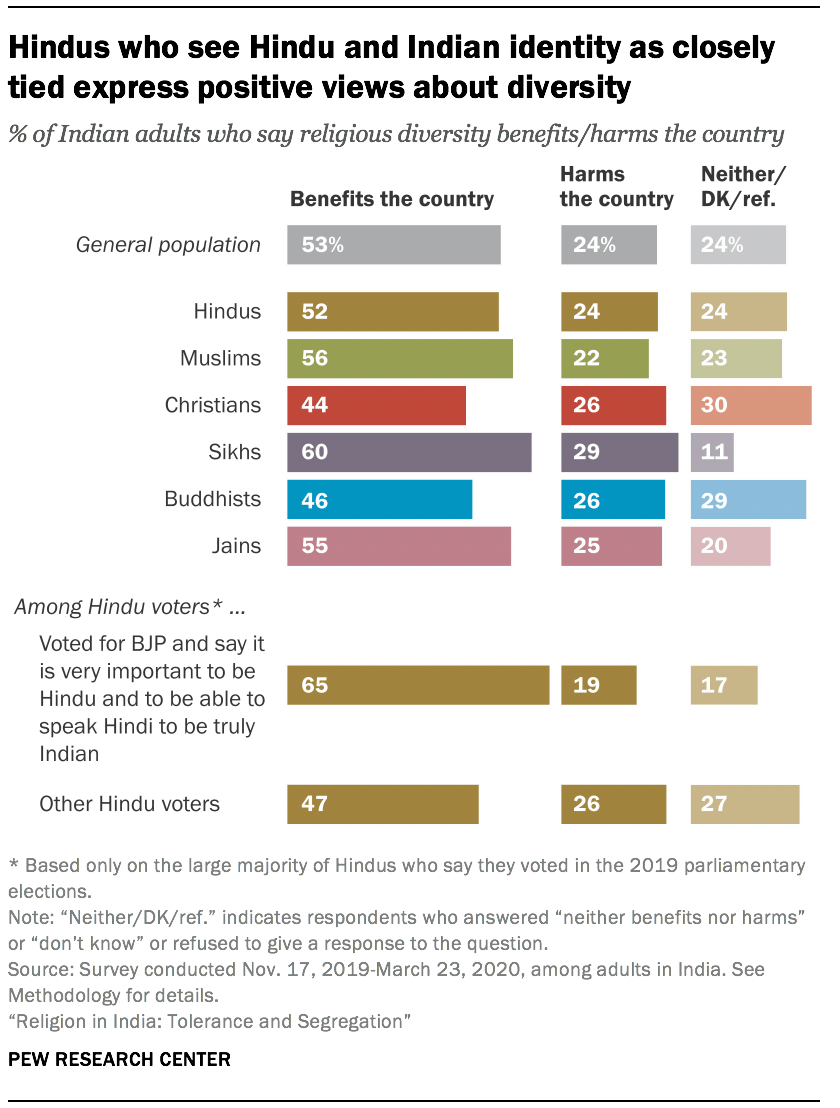
Of course, religion is not the only fault line in India. Pew also examined issues of caste.
Only 22 percent of Indian Christians identify as General Category Indians—not belonging to any protected group—while 33 percent identify as members of Scheduled Castes (often referred to as Dalits, or formerly as “untouchables"), 24 percent as members of Scheduled Tribes, and 17 percent as members of Other Backward Classes (OBC). A higher share of Christians identify as Scheduled Tribes than of any other religious group or the general population.
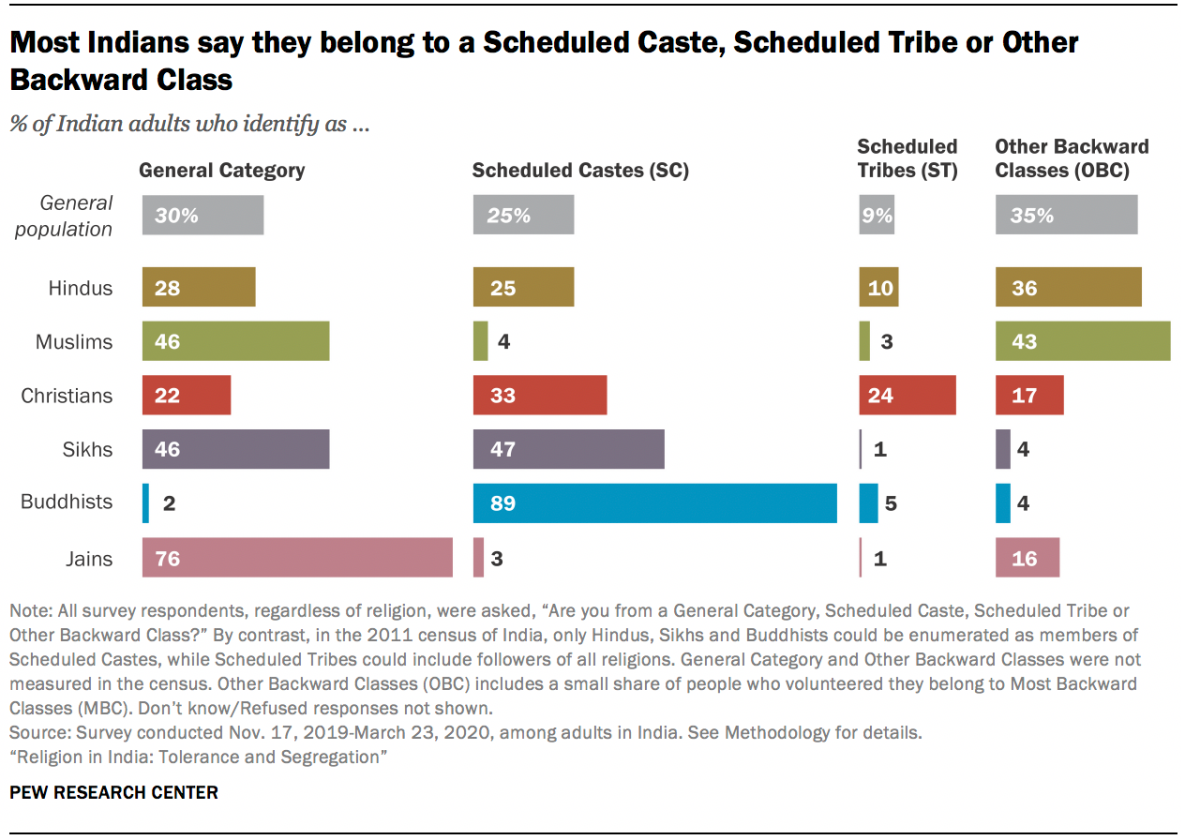 Is there more to it than merely playing harps and singing?Many people suspect that heaven is boring: you find there only harp playing and singing and casting down of crowns. Surely heaven will be boring after a million years or so!To escape that boredom, some people have imagined an eternity of activities—work, perhaps (maybe pruning the Tree of Life?), or a continuation of life vocations (like Kipling’s eternally painting artist). It would seem likely, however, that a surgeon would get bored with performing an infinite number of, say, tonsilectomies.Other, more “spiritual” people, see heaven as an eternal camp meeting or Bible conference. Presumably, there all the fine points of theology will be worked out.Still others seem to expect a posh (golden streets) retirement center, with God as the kindly caretaker (anyone for shuffleboard?).The idea of infinite time on one’s hands seems to be the major problem in contemplating heaven: the idea of infinity is really mind boggling. Consider these bits of mathematics: ∞ (infinity) plus 101000 (101000 is a short form of 1 followed by 1,000 zeros), or minus 101000, or times 101000, or divided by 101000. The answer is always ∞.Infinity appears invulnerable; whatever you do to it, it remains unaffected. What would it be like to celebrate New Year’s Day in A.D. 1,000,000 and know that so far as eternity is concerned, no time has passed? To imagine existence in a forever-ongoing eternity is truly mind boggling.But there is evidently something wrong in many speculations about heaven—for they really are speculation. Scripture tells us little about heaven, and what is there is mostly in symbols. But some speculations are better than others, and perhaps a suggestion may help: The core of the difficulty is that we have had little experience that would prepare us for heaven and eternity.First, our experience is earthbound, tied to jobs, houses or apartments, the kids, IRAS, and retirement. As a consequence, we are hardly equipped to think in terms other than the continuation of these concerns and activities. Probably that is why Paul can tell us that what is in prospect for us cannot be imagined; we have only what God tells us—and that’s not much (1 Cor. 2:9–10).Second, our experience is time bound. Our activities have a beginning, a continuance, and an end. Today we are conscious of a time structure and of the passage of time. We look forward to an end, to the achievement of some goal. It may be a United Way campaign, or woodworking, or a game—even writing an article on heaven. But heaven is different: there is beginning and continuance, but no end. There is no achievement to look forward to. There is only the continuing. And it is this continuing that threatens to be boring.Third, our earthly existence has been primarily self-centered. We have been busy with our careers and our families and our debts, with legislators and presidents. But in heaven, all these will be past, with heaven providing one long retirement from all those things we have been doing for ourselves.Of course, retirement often comes as a relief. Frequently, however, the relief lasts only for a while, and then boredom sets in. In light of all these factors, it is easy to see why it is difficult to speculate about heaven. We could simply abandon all speculation and wait for the reality.But one aspect of our earthly existence will persist eternally: it is our worship of God, glorifying and enjoying him. We do this on earth, we will do this in heaven—forever. Heaven will allow us to experience perfectly that famous answer in the catechism: “The chief end of man is to glorify God and enjoy him forever.”Note, however, that we shall not be enjoying ourselves, but God. Now, on earth, we are not heavenly minded; we tend to think of ourselves, of enjoying ourselves. But heaven will be different. In heaven the center is and will be God.But aren’t we back at square one with this idea of eternal worship—all those harps and so on? No, we are beyond them, for they are tools, maybe real, maybe symbolic. The reality beyond them is the state of heart and mind; it is our activity for eternity: glorifying and enjoying God. But is that boring?Have you ever noticed a couple deeply in love? They can simply sit and look at each other without a word. Suppose they could be frozen in one of those ecstatic moments, to go on with no end and with no sense of passing time. Would not this be “heaven” to them? In the same way, we must remember that heaven is not timebound. Time, and the sense of time, will be swallowed up in eternity. But there it will be the church worshiping.Think of a crowd of supporters whose athletic team has just won a championship game. Freeze them in that moment. Is that not “heaven” for them? Then think of the church caught up in glorifying and enjoying God and frozen there forever.Does heaven still sound boring?LAUREN A. KINGDr. King is English professor emeritus at Malone College, Canton, Ohio.
Is there more to it than merely playing harps and singing?Many people suspect that heaven is boring: you find there only harp playing and singing and casting down of crowns. Surely heaven will be boring after a million years or so!To escape that boredom, some people have imagined an eternity of activities—work, perhaps (maybe pruning the Tree of Life?), or a continuation of life vocations (like Kipling’s eternally painting artist). It would seem likely, however, that a surgeon would get bored with performing an infinite number of, say, tonsilectomies.Other, more “spiritual” people, see heaven as an eternal camp meeting or Bible conference. Presumably, there all the fine points of theology will be worked out.Still others seem to expect a posh (golden streets) retirement center, with God as the kindly caretaker (anyone for shuffleboard?).The idea of infinite time on one’s hands seems to be the major problem in contemplating heaven: the idea of infinity is really mind boggling. Consider these bits of mathematics: ∞ (infinity) plus 101000 (101000 is a short form of 1 followed by 1,000 zeros), or minus 101000, or times 101000, or divided by 101000. The answer is always ∞.Infinity appears invulnerable; whatever you do to it, it remains unaffected. What would it be like to celebrate New Year’s Day in A.D. 1,000,000 and know that so far as eternity is concerned, no time has passed? To imagine existence in a forever-ongoing eternity is truly mind boggling.But there is evidently something wrong in many speculations about heaven—for they really are speculation. Scripture tells us little about heaven, and what is there is mostly in symbols. But some speculations are better than others, and perhaps a suggestion may help: The core of the difficulty is that we have had little experience that would prepare us for heaven and eternity.First, our experience is earthbound, tied to jobs, houses or apartments, the kids, IRAS, and retirement. As a consequence, we are hardly equipped to think in terms other than the continuation of these concerns and activities. Probably that is why Paul can tell us that what is in prospect for us cannot be imagined; we have only what God tells us—and that’s not much (1 Cor. 2:9–10).Second, our experience is time bound. Our activities have a beginning, a continuance, and an end. Today we are conscious of a time structure and of the passage of time. We look forward to an end, to the achievement of some goal. It may be a United Way campaign, or woodworking, or a game—even writing an article on heaven. But heaven is different: there is beginning and continuance, but no end. There is no achievement to look forward to. There is only the continuing. And it is this continuing that threatens to be boring.Third, our earthly existence has been primarily self-centered. We have been busy with our careers and our families and our debts, with legislators and presidents. But in heaven, all these will be past, with heaven providing one long retirement from all those things we have been doing for ourselves.Of course, retirement often comes as a relief. Frequently, however, the relief lasts only for a while, and then boredom sets in. In light of all these factors, it is easy to see why it is difficult to speculate about heaven. We could simply abandon all speculation and wait for the reality.But one aspect of our earthly existence will persist eternally: it is our worship of God, glorifying and enjoying him. We do this on earth, we will do this in heaven—forever. Heaven will allow us to experience perfectly that famous answer in the catechism: “The chief end of man is to glorify God and enjoy him forever.”Note, however, that we shall not be enjoying ourselves, but God. Now, on earth, we are not heavenly minded; we tend to think of ourselves, of enjoying ourselves. But heaven will be different. In heaven the center is and will be God.But aren’t we back at square one with this idea of eternal worship—all those harps and so on? No, we are beyond them, for they are tools, maybe real, maybe symbolic. The reality beyond them is the state of heart and mind; it is our activity for eternity: glorifying and enjoying God. But is that boring?Have you ever noticed a couple deeply in love? They can simply sit and look at each other without a word. Suppose they could be frozen in one of those ecstatic moments, to go on with no end and with no sense of passing time. Would not this be “heaven” to them? In the same way, we must remember that heaven is not timebound. Time, and the sense of time, will be swallowed up in eternity. But there it will be the church worshiping.Think of a crowd of supporters whose athletic team has just won a championship game. Freeze them in that moment. Is that not “heaven” for them? Then think of the church caught up in glorifying and enjoying God and frozen there forever.Does heaven still sound boring?LAUREN A. KINGDr. King is English professor emeritus at Malone College, Canton, Ohio.
Most Indians and most protected groups don’t say there is a lot of discrimination against SC/ST/OBC members in India today. Only about 1 in 5 say so, except for in the Northeast where 1 in 3 do.
And only a third of Christians say it is very important to stop believers from marrying into other castes. This is the lowest of any religious or demographic group measured, vs two-thirds of the general population saying marriage between castes is very important to stop.
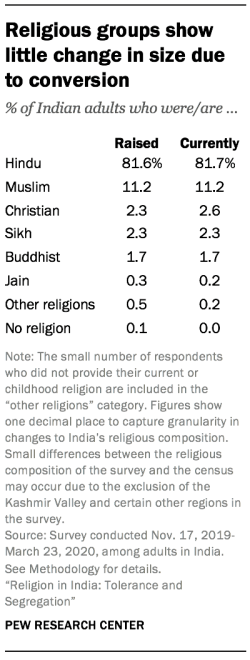
While Pew finds that religious conversion is rare in India, Hindus register the most conversions while Christians register the greatest “net gains.” Researchers found that 0.4 percent of survey respondents are former Hindus who now identify as Christian, while 0.1 percent are former Christians.
The vast majority of Indian adults (98%) say they are currently in the same religion they were raised, with Hindus registering the most switching into and out of their religion, followed by Muslims and Christians.
Pew found that 2.6 percent of Indian adults are currently Christians while 2.3 percent were raised Christian, as well as that 0.4 percent of all Indian adults were raised as something else but now identify as Christian. Given India’s population of about 1.38 billion, that would translate to between 4.1 million and 5.5 million Christian converts.
Pew researchers noted:
“In recent years, conversion of people belonging to lower castes (including Dalits) away from Hinduism—a traditionally non-proselytizing religion—to proselytizing religions, especially Christianity, has been a contentious political issue in India. As of early 2021, nine states have enacted laws against proselytism, and some previous surveys have shown that half of Indians support legal bans on religious conversions.
This survey, though, finds that religious switching, or conversion, has a minimal impact on the overall size of India’s religious groups. For example, according to the survey, 82% of Indians say they were raised Hindu, and a nearly identical share say they are currently Hindu, showing no net losses for the group through conversion to other religions. Other groups display similar levels of stability.
Changes in India’s religious landscape over time are largely a result of differences in fertility rates among religious groups, not conversion.”
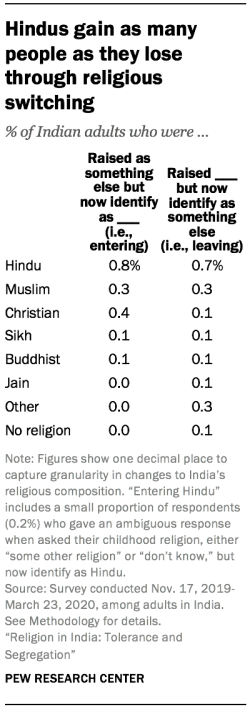
Selected Writings of C. F. W. Walther, edited by Aug. R. Suelflow (Concordia Publishing House, 192 pp. each, .95 for the series: Law and Gospel, tr. Herbert J. A. Bouman; Selected Sermons, tr. Henry J. Eggold; Convention Essays, tr. Aug R. Suelflow, Walther on the Church, tr. John M. Drickamer; Selected Letters, tr. Roy A. Suelflow; Editorials from’ “Lehre und Wehre,” tr. Herbert J. A. Bouman), is reviewed by Mark A. Noll, visiting professor of history, Juniata College, Huntingdon, Pennsylvania.
Carl Ferdinand Wilhelm Walther (1811–1887) is one of the great figures of American church history. An immigrant from Saxony who arrived in the United States in 1839, Walther eight years later became the founding president of the Lutheran Church-Missouri Synod. For most of his adult life he edited a popular magazine, Der Lutheraner, and a scholarly journal, Lehre und Wehre (Doctrine and Defense), which promoted Lutheran confessionalism and warm piety in equal measure. He was president of Concordia Seminary (St. Louis) for 37 years, a dynamic preacher, a faithful pastor, a learned professor, a diligent scholar, and a prolific author. His views on the church (which favored a Congregationalism adapted to the free air of America) and on salvation (which advocated such a high view of grace as to be called “crypto-Calvinistic”) shaped the Missouri Synod during the years in which it emerged as a mighty American denomination. Yet no one beyond the Lutherans, and not even many of them, pay much attention to Walther today. One reason for this regrettable neglect is that all his writing was in German.Now Concordia Publishing House has released a substantial sample of Walther’s works in translation. No longer do evangelicals have any excuse to overlook this forceful teacher, whose work cries out for comparison with his better-known contemporaries. Walther’s sermons and letters reveal a Christian zeal as fervent as Moody’s. His editorials and convention essays rank him with Charles Hodge as a defender of the Trinitarian orthodoxy of the Reformation. His essays on the church speak as boldly for Lutheranism as C. I. Scofield did for dispensationalism. And his masterpiece, The Proper Distinction Between Law and Gospel (here presented in a competent abridgment), is one of the few truly significant works of evangelical theology produced in the United States. This series makes available some works from a mighty man of God. Our only regret can be that it has taken so long for them to appear in English.
Like It Was: The Diaries of Malcolm Muggeridge (Wm. Morrow, 542 pp., .00) is reviewed by Lloyd Billingsley, a writer living in Poway, California.
It would not work with any other author. The life of Malcolm Muggeridge has been recycled numerous times through the years, with each attempt producing another deep mine of raging truth. In these diaries, which cover the period from 1932 to 1962, Muggeridge shows himself incapable of writing badly. The familiar themes are all here, but all is fresh, alive, and wonderfully worth reading.The same disillusionment with the Soviet workers kingdom found in works such as Winter in Moscow fairly shouts from these pages. Visiting Lenin’s tomb, he writes, “I had a queer conviction that one day an enraged mob would tear him from his place and trample him under foot.”Following Muggeridge through his journalistic years in India, England, and America, the reader meets a host of VIPS: de Gaulle, Churchill, Dorothy Sayers, George Orwell, the Beatles, and many others, all brilliantly sketched. His private observations about mass media are interesting. He wrote that leftist journals such as the New Statesman had scored great propaganda success because they “established the position that to be intelligent is to be Left, whereas almost the exact opposite is true.” Also recorded is the abuse such observations earned him.Delightful insights on Muggeridge’s Christian experience pop up from time to time. While still in Russia, he wrote that he had been reading aloud from John Donne’s sermons and enjoying them. Describing the decay he saw on every hand in India, he writes of a longing for eternity. Back in England, on January 5, 1954, he wrote, “Bad night full of dark fears. While shaving suddenly thought with infinite longings how, of all things, I’d most love to live a Christian life. This is the only wish I’d now have.”Muggeridge’s eldest son Leonard (nicknamed “Pan”) had strong evangelical inclinations and eventually attended Bible college. Leonard’s influence on his father may, as the entries suggest, be greater than Muggeridge has let on in other works.Since the diaries stop in 1962, most readers will look forward to the release of the third volume of Muggeridge’s autobiography, where we hope the author will see fulfilled his wish stated in the entry for August 29, 1961: “May I be guided to eternity with my senses unclouded, my mind unafraid, and my soul full of love.”
Pew also examined India’s Hindu converts to Christianity more in-depth:
Three-quarters of India’s Hindu converts to Christianity (74%) are concentrated in the Southern part of the country – the region with the largest Christian population. As a result, the Christian population of the South shows a slight increase within the lifetime of survey respondents: 6% of Southern Indians say they were raised Christian, while 7% say they are currently Christian.
Some Christian converts (16%) reside in the East as well (the states of Bihar, Jharkhand, Odisha and West Bengal); about two-thirds of all Christians in the East (64%) belong to Scheduled Tribes.
Nationally, the vast majority of former Hindus who are now Christian belong to Scheduled Castes (48%), Scheduled Tribes (14%) or Other Backward Classes (26%). And former Hindus are much more likely than the Indian population overall to say there is a lot of discrimination against lower castes in India. For example, nearly half of converts to Christianity (47%) say there is a lot of discrimination against Scheduled Castes in India, compared with 20% of the overall population who perceive this level of discrimination against Scheduled Castes. Still, relatively few converts say they, personally, have faced discrimination due to their caste in the last 12 months (12%).
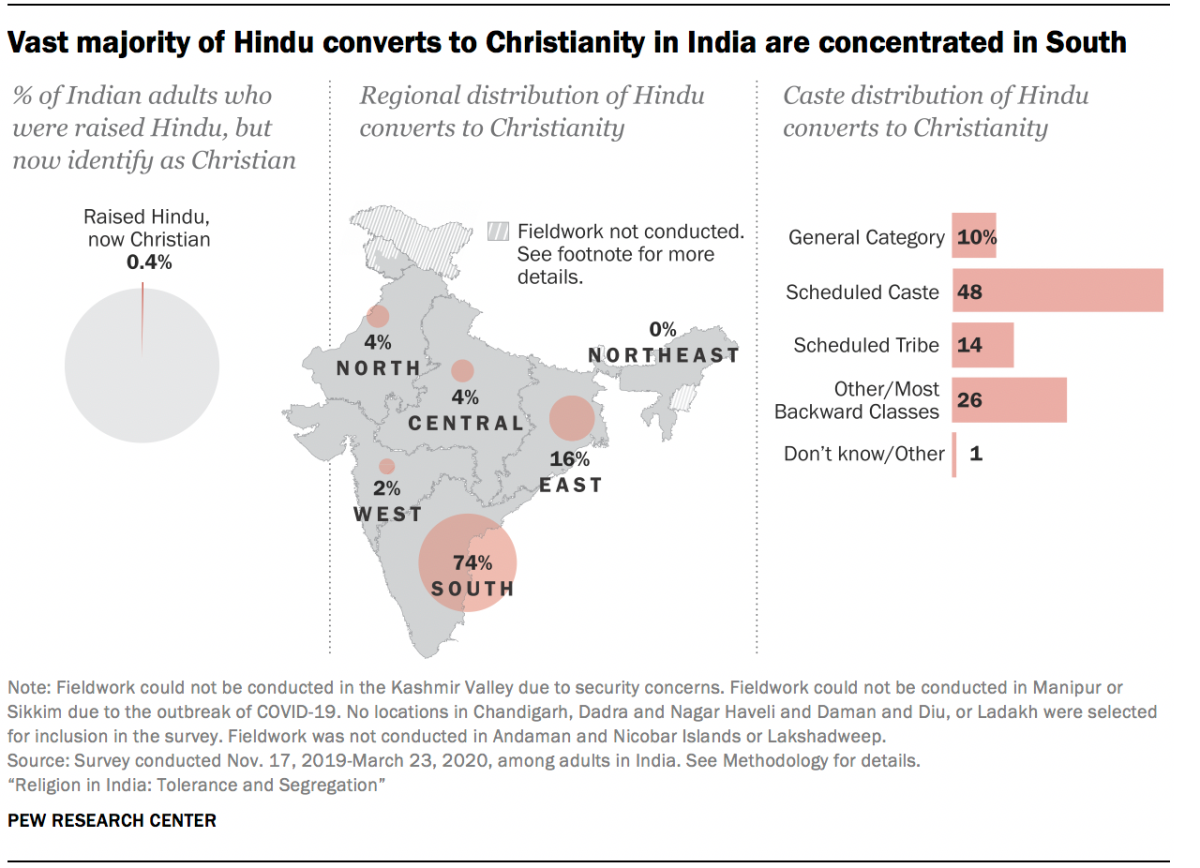
Selected Writings of C. F. W. Walther, edited by Aug. R. Suelflow (Concordia Publishing House, 192 pp. each, .95 for the series: Law and Gospel, tr. Herbert J. A. Bouman; Selected Sermons, tr. Henry J. Eggold; Convention Essays, tr. Aug R. Suelflow, Walther on the Church, tr. John M. Drickamer; Selected Letters, tr. Roy A. Suelflow; Editorials from’ “Lehre und Wehre,” tr. Herbert J. A. Bouman), is reviewed by Mark A. Noll, visiting professor of history, Juniata College, Huntingdon, Pennsylvania.
Carl Ferdinand Wilhelm Walther (1811–1887) is one of the great figures of American church history. An immigrant from Saxony who arrived in the United States in 1839, Walther eight years later became the founding president of the Lutheran Church-Missouri Synod. For most of his adult life he edited a popular magazine, Der Lutheraner, and a scholarly journal, Lehre und Wehre (Doctrine and Defense), which promoted Lutheran confessionalism and warm piety in equal measure. He was president of Concordia Seminary (St. Louis) for 37 years, a dynamic preacher, a faithful pastor, a learned professor, a diligent scholar, and a prolific author. His views on the church (which favored a Congregationalism adapted to the free air of America) and on salvation (which advocated such a high view of grace as to be called “crypto-Calvinistic”) shaped the Missouri Synod during the years in which it emerged as a mighty American denomination. Yet no one beyond the Lutherans, and not even many of them, pay much attention to Walther today. One reason for this regrettable neglect is that all his writing was in German.Now Concordia Publishing House has released a substantial sample of Walther’s works in translation. No longer do evangelicals have any excuse to overlook this forceful teacher, whose work cries out for comparison with his better-known contemporaries. Walther’s sermons and letters reveal a Christian zeal as fervent as Moody’s. His editorials and convention essays rank him with Charles Hodge as a defender of the Trinitarian orthodoxy of the Reformation. His essays on the church speak as boldly for Lutheranism as C. I. Scofield did for dispensationalism. And his masterpiece, The Proper Distinction Between Law and Gospel (here presented in a competent abridgment), is one of the few truly significant works of evangelical theology produced in the United States. This series makes available some works from a mighty man of God. Our only regret can be that it has taken so long for them to appear in English.
Like It Was: The Diaries of Malcolm Muggeridge (Wm. Morrow, 542 pp., .00) is reviewed by Lloyd Billingsley, a writer living in Poway, California.
It would not work with any other author. The life of Malcolm Muggeridge has been recycled numerous times through the years, with each attempt producing another deep mine of raging truth. In these diaries, which cover the period from 1932 to 1962, Muggeridge shows himself incapable of writing badly. The familiar themes are all here, but all is fresh, alive, and wonderfully worth reading.The same disillusionment with the Soviet workers kingdom found in works such as Winter in Moscow fairly shouts from these pages. Visiting Lenin’s tomb, he writes, “I had a queer conviction that one day an enraged mob would tear him from his place and trample him under foot.”Following Muggeridge through his journalistic years in India, England, and America, the reader meets a host of VIPS: de Gaulle, Churchill, Dorothy Sayers, George Orwell, the Beatles, and many others, all brilliantly sketched. His private observations about mass media are interesting. He wrote that leftist journals such as the New Statesman had scored great propaganda success because they “established the position that to be intelligent is to be Left, whereas almost the exact opposite is true.” Also recorded is the abuse such observations earned him.Delightful insights on Muggeridge’s Christian experience pop up from time to time. While still in Russia, he wrote that he had been reading aloud from John Donne’s sermons and enjoying them. Describing the decay he saw on every hand in India, he writes of a longing for eternity. Back in England, on January 5, 1954, he wrote, “Bad night full of dark fears. While shaving suddenly thought with infinite longings how, of all things, I’d most love to live a Christian life. This is the only wish I’d now have.”Muggeridge’s eldest son Leonard (nicknamed “Pan”) had strong evangelical inclinations and eventually attended Bible college. Leonard’s influence on his father may, as the entries suggest, be greater than Muggeridge has let on in other works.Since the diaries stop in 1962, most readers will look forward to the release of the third volume of Muggeridge’s autobiography, where we hope the author will see fulfilled his wish stated in the entry for August 29, 1961: “May I be guided to eternity with my senses unclouded, my mind unafraid, and my soul full of love.”
Philip found Pew’s findings on conversion to be the most surprising, including that conversions are so rare in India, that Hindus gain as many people as they lose, and that most conversions from Hinduism to Christianity happen in the South.
“It will be a disappointment to the government to realize that ‘religious conversions are rare in India,’” he said, “and it is encouraging to know that the efforts to enact the anti-conversion laws in most of the states are futile and a publicity stunt.”
Pew also examined theology and rituals in India, finding that India remains a highly religious nation with a fair amount of intermixing of beliefs and practices:
“As a result of living side by side for generations, India’s minority groups often engage in practices that are more closely associated with Hindu traditions than their own. For instance, many Muslim, Sikh, and Christian women in India say they wear a bindi (a forehead marking, often worn by married women), even though putting on a bindi has Hindu origins.
Similarly, many people embrace beliefs not traditionally associated with their faith: Muslims in India are just as likely as Hindus to say they believe in karma (77% each), and 54% of Indian Christians share this view. Nearly 3 in 10 Muslims and Christians say they believe in reincarnation (27% and 29%, respectively). While these may seem like theological contradictions, for many Indians, calling oneself a Muslim or a Christian does not preclude believing in karma or reincarnation—beliefs that do not have a traditional, doctrinal basis in Islam or Christianity.”
“Obviously, religion is something deep and one may not afford to remain on one’s limited understanding,” said Machado. “When I, as a religious leader, talk to my own Catholic Christians, I find how little they know of the richness of their faith. But they are who they are, and God does not punish them for that—although I do try to create a network to learn more about their own religious faith as well as the faith of their neighbors who may belong to other faiths.”
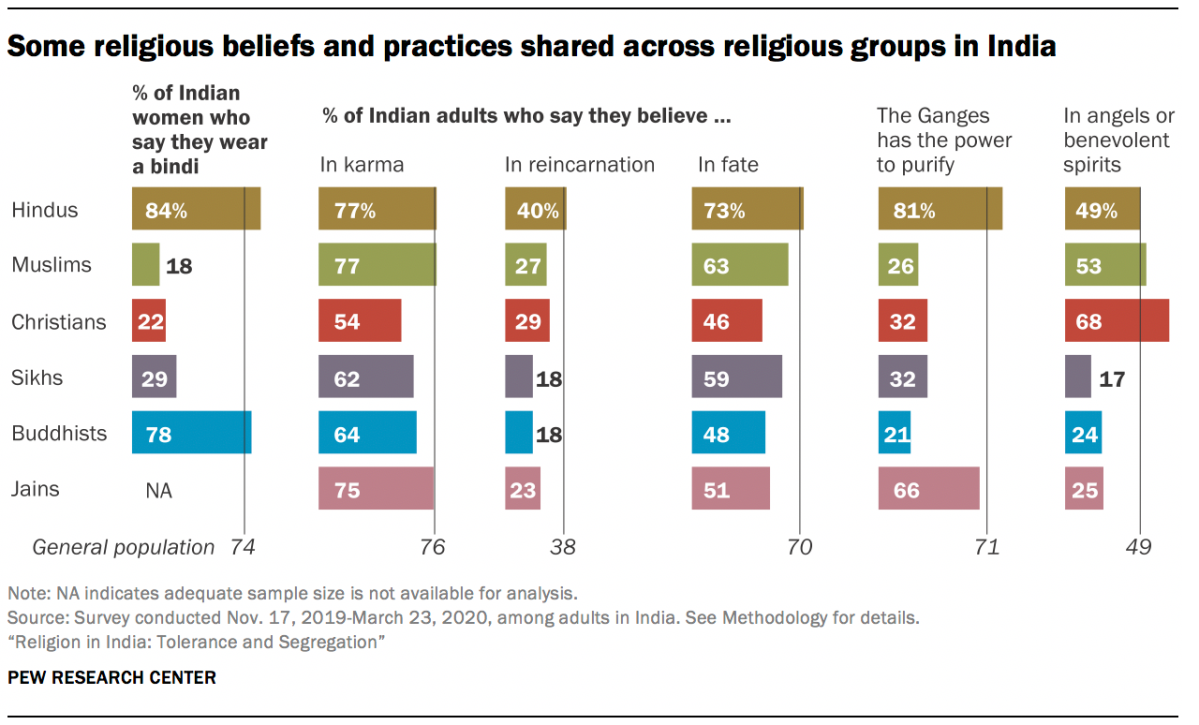 His influence cripples the mission to the Hindus.Though nearly a full generation has passed since the death of Gandhi, his spiritual and political legacy continues to exert a telling force upon the Christian mission to Hindu India. In a speech made 50 years ago to Christians at Leonard Theological College, Jabalpur, Gandhi laid out the terms under which they might assist his movement.Gandhi said that Christian missionaries could work to help eradicate the caste system that reduced the lowest strata of the Indian population to “untouchability,” but Christians should not try to convert Hindus. Gandi warned: “If you believe that Hinduism is a gift, not of God but of Satan, quite clearly you cannot accept my terms.”Because Western missionaries in India did not accept those terms, and continued to work for the religious conversions so abhorred by Gandhi, they now face extinction. While old career missionaries (mostly dating from the last great influx into India about 30 years ago) usually are able to secure a “no objection to return” endorsement upon their passports before coming home on furlough, young replacements do not often gain entrance into India. After filling out visa applications, the prospective stateside missionary must wait two to three months while his forms are sent to India for review. Granted visas are so rare that The Evangelical Alliance Mission (TEAM) has placed only one North American couple on the Indian field in the last 18 years. Entirely in keeping with Gandhian philosophy, the foreign missionary movement has been strangled slowly and nonviolently in the coils of bureaucratic red tape. However, some missionaries from British Commonwealth countries still trickle in, as well as other Western Christians who come in on student visas or to pursue “tentmaker” occupations for which no Indian national is qualified.Most converts to Christianity have come from the lower castes of India’s vast (presently 83 percent) Hindu population. Often, masses of dispossessed Harijans (untouchables) converted in the hope of gaining social or political benefits. Consequently, Christianity was stigmatized in the eyes of upper-caste Hindus, as witnessed by the scarcity of Brahmin converts today. Rising Hindu caste discrimination over the last several years has led to increasing numbers of Harijan converts and a reactionary zeal among right-wing Hindu groups to reclaim them. Sometimes, Harijans dissatisfied with their gains under Christianity, convert to Islam or back to Hinduism. The evangelism of the Indian church is often preoccupied with keeping nominal converts in the fold. Overall, relatively few Hindus are being added to the percentage of India’s 684 million population that calls itself Christian (2.6 percent are Christian, and two-thirds of them are Catholic or Orthodox).Hindu pressure against mission work in India escalated in 1979 when the Freedom of Religions Bill was introduced before the Indian Parliament. This bill sought to “prohibit all conversions from one religion to another by the use of force or inducement or by fraudulent means,” as well as conversion of any person under 18. Because of its excessively broad definitions of force, fraud, and inducement, the bill threatened to outlaw all Christian evangelism and charitable work in India.The bill was scuttled in 1980 in the wake of Indira Gandhi’s return to power, but similar strictures stand as law in the states of Orissa, Madhya Pradesh, and Arunachal Pradesh. In this last state, officially sanctioned persecutions of Christians belie fundamental rights guaranteed by the Indian constitution of freedom to practice, preach, and propagate religious belief.The temper of Hindu society militates against Western crusade-style evangelistic campaigns. High regard by individuals for their families, which would incur disgrace by conversion of a member to Christianity, precludes anything more than a polite hearing of the gospel. Mahendra Singhal, at present a Christian educator in the U.S., recalls that after his conversion in 1963 he was advised to change his name. Hindu evangelist Rabindranath Maharaj claims that after checking every nearby fellowship in the aftermath of a crusade in a large Indian city that drew thousands nightly, he found only one new convert actually added to a church.Hindu philosophical difficulties with Christianity are epitomized by Gandhi’s query: “Why should a Christian want to convert a Hindu to Christianity and vice versa? Why should he not be satisfied if the Hindu is a good or a godly man?” Maharaj says he meets the same response today when he presents the claims of Christ to his people. “Hindus will agree with all you have to say until you preach the uniqueness of Jesus Christ. Then you lose them. They cannot conceive that there is only one way to God.” According to Singhal, Hindus are spiritually very aware but never define God concretely. They must be shown that Jesus Christ is the true embodiment of their divine abstraction.The caste system is as integral to Hinduism as the first chapter of its sacred Bhagavad Gita, in which the god Krishna aquaints the man Arjuna with his caste obligations. Even Gandhi wrote in 1935: “It is a conviction daily growing upon me that the great and rich Christian missions will render true service to India if they can persuade themselves to confine their activities to humanitarian service without the ulterior motive of converting India, or at least her unsophisticated villagers, to Christianity, and destroying their social superstructure, which, notwithstanding its many defects, has stood now from time immemorial.…”“India’s real problem is a spiritual one, not a physical one as propagated by the media. The Hindu religion perpetuates a mindset that makes people accept the lot their gods have given them,” observes Paul Windsor, a New Zealander raised in India.Recent positive developments in indigenous Indian evangelism include the fruitful penetration of many Hindu villages by evangelists from the Friends’ Missionary Prayer Band and the 1982 release of the New Hindi Bible, which compares to the Old Hindi version much as the NIV compares to the KJV. In addition, there is a new array of social action programs aimed at aiding oppressed members of the lower castes. The 1979 Madras “Declaration of Evangelical Social Action” shaped a comprehensive new commitment by the Indian church to social justice and material relief alongside evangelism and education as means of spreading the gospel.One of the most remarkable examples of contextualization of the Christian mission to Hindu India is the growth of Christian ashrams (numbered at about 40 in 1973). Following the ideal of ancient and modern Hindu discipleship communities such as that of Gandhi at Sevagram, these ashrams provide a contemplative atmosphere conducive to communion with God. For example, the Aashiana community in New Delhi has about 25 members committed to a life of prayer, mutual support, and service to marginal people living in the city. Upper-caste Hindu youths who drop out of their society hippie-style are sometimes drawn to Aashiana alongside spiritual pilgrims from the West.In the light of Christianity’s historical impact upon Hinduism, it is ironic that some nominal Christians in the West are turning eastward to embrace one of a plethora of cults spawned in India. Danish Lutheran scholar Johannes Aagaard has documented the activities of the Visva Hindu Parished (VHP), the international missionary council of Hinduism that promoted a 60,000-strong world Hindu conference in Allahabad in 1979. The VHP’s avowed goals are to consolidate and strengthen Hindu society and to establish a mission for disseminating a dynamic Hinduism worldwide. Many of the guru associations operating in the West, such as Hare Krishna, function in cooperation with the VHP. Aagaard’s research has convinced him that Indian Hinduism is carrying on a vigorous mission program both at home and abroad, and that the strategies and goals of the VHP are the starting point for many of the new religious movements in the West.Already, many Westerners whose religious convictions have been relativized can say with Gandhi: “For me the different religions are beautiful flowers from the same garden, or they are branches of the same majestic tree. Therefore they are equally true.…” Rabi Maharaj is unequivocal about the recent momentum that Gandhi’s religious ideas have gained. “The film Gandhi presents a major stumbling block to evangelism both in the West and in India,” he declares. Maharaj fears that the West is being deluded into universalism and that the East is being reinforced in that ancient lie. “Many Indians have asked me, ‘Why should I look to Christ for the answer when so many of your Western Christians are looking to Hinduism for the answer?’ ”What can the Christian mission to Hindu learn from Gandhi and his religion? According to the Lausanne-sponsored report on Christian witness to Hindus, essential qualities for a spiritual leader in Hindu society are the very Gandhi-like qualities of being willing to wait, self-mortification of both body and desires, voluntary suffering of pain and fasting. “Christian leaders with this type of spiritual qualification are a powerful means of communication,” concludes the report.Of necessity, the classic Western mission program of mass evangelism, medical work, and education must become more and more “Indianized,” both in terms of personnel and methodology. Inevitably, the work of such stalwarts as the Bible and Medical Missionary Fellowship (BMMF), the Christian and Missionary Alliance, the International Christian Fellowship, and others must pass into indigenous hands and take on indigenous ways. What will be the best strategy for an effective Christian witness to Hindu India? Says Paul Windsor, who combines BMMF upbringing with research in missions, “If Christian missionaries would only present the poor, humble Jesus of the New Testament to the Hindu masses, rather than Jesus in the image of an English bishop or an American evangelist, then surely those masses would follow Christ just as they followed Gandhi.”A tribe of Guatemala Indians, fleeing guerrilla and government warfare in their homeland, has taken cover in a surprising location: downtown Los Angeles. After visiting three Christian members of the K’anjobal tribe in their little apartment, missionary Jim McKelvey discovered that there are hundreds more in the city. Many other Guatemalan believers are being uprooted, according to CAM International missionary Edward Sywulka. Two thousand left the town of Nenton, some are going to Mexico, and some to other parts of Guatemala. One CAM-related church housed 65 people from nine families until other arrangements could be made. The main translator of the New Testament into the Mam Indian language was killed in the fighting.Drought is afflicting wide areas of northern Africa again this year. In northern Ethiopia some 450,000 people need assistance, and a dozen relief camps and emergency food stations have drawn thousands from areas without water. In Chad, a United Nations relief official says at least 300,000 people are suffering from malnutrition so severe that thousands may die.“We know and understand that we have sinned, that we have abused power,” said Guatemala’s President Efraín Ríos Montt last month of excesses by the military. He then announced the exchange of the state of siege for a somewhat less restrictive “State of Alert-A,” and a second amnesty for guerrillas. He warned, however, that people who continued to harm the population would be punished. A wave of criticism followed his government’s execution of six guerrillas just prior to Pope John Paul II’s visit to Guatemala.Three mission agencies have decided on a joint effort to evangelize the Miguindanao people, a Muslim tribe on the island of Mindanao, Philippines. The three—Overseas Missionary Fellowship, SEND International, and International Christian Fellowship—are developing a strategy for using a contextual Muslim approach.”The Latin American Bishops Conference, opened by the Pope in Port-au-Prince, Haiti, on the last leg of his visit, zeroed in on rapid evangelical growth as a major concern. The conference was expected to order a study of the fast-growing denominations to help it work out a strategy to counter their inroads. A Central American bishop said the purpose would not be to enter into polemics, but “to study why the sects appeal to people and learn from this.” Likely elements of a Roman Catholic response: more aggressive use of radio and television, more use of the Bible in teaching, and more singing (and clapping) in services.North American SceneTwo Franciscan nuns and seven others have been found innocent of disorderly conduct on charges stemming from the jailing and transfer of Eddie Carthan. They had been charged with disturbing the peace during a protest of the transfer of Carthan to the state penitentiary in Parchman, Mississippi. Carthan, the first black mayor of Tchula, Mississippi, was jailed on a simple assault charge. Several groups contend he is a victim of racism (CT, Jan. 7, p. 46).For the eighth time, the New York City Council has rejected a proposed gay-rights bill. Both Edward Koch, the mayor, and Mario Cuomo, the governor of New York, lobbied for the measure’s passage. But fundamentalist Protestants, Orthodox Jews, and conservative Catholics, all of whom opposed the measure, won out. Following the vote, Mayor Koch promised the bill would be back.American Civil Liberties Union lawyers were denied permission to question New Jersey legislators who voted for a law requiring schools to observe a minute of silence each day. The ACLU has filed a suit against the law and is trying to prove that the purpose of the law is to reintroduce prayer into public schools.The antipornography Chicago Statement Foundation recently held a demonstration to praise General Motors, which, the foundation says, does not advertise in pornographic magazines such as Playboy and Penthouse. The demonstration was carried out by the foundation’s New York affiliate. The foundation praises advertisers who do not put their money into pornography outlets instead of criticizing those who do.Abortion foes and many other residents of Madison, Wisconsin, are upset at six live-birth abortions in the last 10 months in Madison. All six babies died within 27 hours after they were aborted. All the pregnancies were in the second three months of development, a time during which few infants survive natural delivery. Madison General Hospital has barred all abortions after 18 weeks unless the woman’s life is in danger. The University of Wisconsin Hospital now requires an ultrasound test for women whose pregnancies are more than 20 weeks old. Ultrasound is the most accurate way to determine fetal age.CorrectionAn article about armed forces chaplains (CT, Feb. 18, p. 24) mistakenly said that Navy Commander George E. Dobes conducted liturgical and nonliturgical Protestant services. Dobes, a Catholic priest, explains, “As senior chaplain (aboard an aircraft carrier), I was responsible for the religious needs of all who were stationed on board, but I did not conduct Protestant services. We had two Protestant chaplains who took responsibility for that.” CT regrets the error.
His influence cripples the mission to the Hindus.Though nearly a full generation has passed since the death of Gandhi, his spiritual and political legacy continues to exert a telling force upon the Christian mission to Hindu India. In a speech made 50 years ago to Christians at Leonard Theological College, Jabalpur, Gandhi laid out the terms under which they might assist his movement.Gandhi said that Christian missionaries could work to help eradicate the caste system that reduced the lowest strata of the Indian population to “untouchability,” but Christians should not try to convert Hindus. Gandi warned: “If you believe that Hinduism is a gift, not of God but of Satan, quite clearly you cannot accept my terms.”Because Western missionaries in India did not accept those terms, and continued to work for the religious conversions so abhorred by Gandhi, they now face extinction. While old career missionaries (mostly dating from the last great influx into India about 30 years ago) usually are able to secure a “no objection to return” endorsement upon their passports before coming home on furlough, young replacements do not often gain entrance into India. After filling out visa applications, the prospective stateside missionary must wait two to three months while his forms are sent to India for review. Granted visas are so rare that The Evangelical Alliance Mission (TEAM) has placed only one North American couple on the Indian field in the last 18 years. Entirely in keeping with Gandhian philosophy, the foreign missionary movement has been strangled slowly and nonviolently in the coils of bureaucratic red tape. However, some missionaries from British Commonwealth countries still trickle in, as well as other Western Christians who come in on student visas or to pursue “tentmaker” occupations for which no Indian national is qualified.Most converts to Christianity have come from the lower castes of India’s vast (presently 83 percent) Hindu population. Often, masses of dispossessed Harijans (untouchables) converted in the hope of gaining social or political benefits. Consequently, Christianity was stigmatized in the eyes of upper-caste Hindus, as witnessed by the scarcity of Brahmin converts today. Rising Hindu caste discrimination over the last several years has led to increasing numbers of Harijan converts and a reactionary zeal among right-wing Hindu groups to reclaim them. Sometimes, Harijans dissatisfied with their gains under Christianity, convert to Islam or back to Hinduism. The evangelism of the Indian church is often preoccupied with keeping nominal converts in the fold. Overall, relatively few Hindus are being added to the percentage of India’s 684 million population that calls itself Christian (2.6 percent are Christian, and two-thirds of them are Catholic or Orthodox).Hindu pressure against mission work in India escalated in 1979 when the Freedom of Religions Bill was introduced before the Indian Parliament. This bill sought to “prohibit all conversions from one religion to another by the use of force or inducement or by fraudulent means,” as well as conversion of any person under 18. Because of its excessively broad definitions of force, fraud, and inducement, the bill threatened to outlaw all Christian evangelism and charitable work in India.The bill was scuttled in 1980 in the wake of Indira Gandhi’s return to power, but similar strictures stand as law in the states of Orissa, Madhya Pradesh, and Arunachal Pradesh. In this last state, officially sanctioned persecutions of Christians belie fundamental rights guaranteed by the Indian constitution of freedom to practice, preach, and propagate religious belief.The temper of Hindu society militates against Western crusade-style evangelistic campaigns. High regard by individuals for their families, which would incur disgrace by conversion of a member to Christianity, precludes anything more than a polite hearing of the gospel. Mahendra Singhal, at present a Christian educator in the U.S., recalls that after his conversion in 1963 he was advised to change his name. Hindu evangelist Rabindranath Maharaj claims that after checking every nearby fellowship in the aftermath of a crusade in a large Indian city that drew thousands nightly, he found only one new convert actually added to a church.Hindu philosophical difficulties with Christianity are epitomized by Gandhi’s query: “Why should a Christian want to convert a Hindu to Christianity and vice versa? Why should he not be satisfied if the Hindu is a good or a godly man?” Maharaj says he meets the same response today when he presents the claims of Christ to his people. “Hindus will agree with all you have to say until you preach the uniqueness of Jesus Christ. Then you lose them. They cannot conceive that there is only one way to God.” According to Singhal, Hindus are spiritually very aware but never define God concretely. They must be shown that Jesus Christ is the true embodiment of their divine abstraction.The caste system is as integral to Hinduism as the first chapter of its sacred Bhagavad Gita, in which the god Krishna aquaints the man Arjuna with his caste obligations. Even Gandhi wrote in 1935: “It is a conviction daily growing upon me that the great and rich Christian missions will render true service to India if they can persuade themselves to confine their activities to humanitarian service without the ulterior motive of converting India, or at least her unsophisticated villagers, to Christianity, and destroying their social superstructure, which, notwithstanding its many defects, has stood now from time immemorial.…”“India’s real problem is a spiritual one, not a physical one as propagated by the media. The Hindu religion perpetuates a mindset that makes people accept the lot their gods have given them,” observes Paul Windsor, a New Zealander raised in India.Recent positive developments in indigenous Indian evangelism include the fruitful penetration of many Hindu villages by evangelists from the Friends’ Missionary Prayer Band and the 1982 release of the New Hindi Bible, which compares to the Old Hindi version much as the NIV compares to the KJV. In addition, there is a new array of social action programs aimed at aiding oppressed members of the lower castes. The 1979 Madras “Declaration of Evangelical Social Action” shaped a comprehensive new commitment by the Indian church to social justice and material relief alongside evangelism and education as means of spreading the gospel.One of the most remarkable examples of contextualization of the Christian mission to Hindu India is the growth of Christian ashrams (numbered at about 40 in 1973). Following the ideal of ancient and modern Hindu discipleship communities such as that of Gandhi at Sevagram, these ashrams provide a contemplative atmosphere conducive to communion with God. For example, the Aashiana community in New Delhi has about 25 members committed to a life of prayer, mutual support, and service to marginal people living in the city. Upper-caste Hindu youths who drop out of their society hippie-style are sometimes drawn to Aashiana alongside spiritual pilgrims from the West.In the light of Christianity’s historical impact upon Hinduism, it is ironic that some nominal Christians in the West are turning eastward to embrace one of a plethora of cults spawned in India. Danish Lutheran scholar Johannes Aagaard has documented the activities of the Visva Hindu Parished (VHP), the international missionary council of Hinduism that promoted a 60,000-strong world Hindu conference in Allahabad in 1979. The VHP’s avowed goals are to consolidate and strengthen Hindu society and to establish a mission for disseminating a dynamic Hinduism worldwide. Many of the guru associations operating in the West, such as Hare Krishna, function in cooperation with the VHP. Aagaard’s research has convinced him that Indian Hinduism is carrying on a vigorous mission program both at home and abroad, and that the strategies and goals of the VHP are the starting point for many of the new religious movements in the West.Already, many Westerners whose religious convictions have been relativized can say with Gandhi: “For me the different religions are beautiful flowers from the same garden, or they are branches of the same majestic tree. Therefore they are equally true.…” Rabi Maharaj is unequivocal about the recent momentum that Gandhi’s religious ideas have gained. “The film Gandhi presents a major stumbling block to evangelism both in the West and in India,” he declares. Maharaj fears that the West is being deluded into universalism and that the East is being reinforced in that ancient lie. “Many Indians have asked me, ‘Why should I look to Christ for the answer when so many of your Western Christians are looking to Hinduism for the answer?’ ”What can the Christian mission to Hindu learn from Gandhi and his religion? According to the Lausanne-sponsored report on Christian witness to Hindus, essential qualities for a spiritual leader in Hindu society are the very Gandhi-like qualities of being willing to wait, self-mortification of both body and desires, voluntary suffering of pain and fasting. “Christian leaders with this type of spiritual qualification are a powerful means of communication,” concludes the report.Of necessity, the classic Western mission program of mass evangelism, medical work, and education must become more and more “Indianized,” both in terms of personnel and methodology. Inevitably, the work of such stalwarts as the Bible and Medical Missionary Fellowship (BMMF), the Christian and Missionary Alliance, the International Christian Fellowship, and others must pass into indigenous hands and take on indigenous ways. What will be the best strategy for an effective Christian witness to Hindu India? Says Paul Windsor, who combines BMMF upbringing with research in missions, “If Christian missionaries would only present the poor, humble Jesus of the New Testament to the Hindu masses, rather than Jesus in the image of an English bishop or an American evangelist, then surely those masses would follow Christ just as they followed Gandhi.”A tribe of Guatemala Indians, fleeing guerrilla and government warfare in their homeland, has taken cover in a surprising location: downtown Los Angeles. After visiting three Christian members of the K’anjobal tribe in their little apartment, missionary Jim McKelvey discovered that there are hundreds more in the city. Many other Guatemalan believers are being uprooted, according to CAM International missionary Edward Sywulka. Two thousand left the town of Nenton, some are going to Mexico, and some to other parts of Guatemala. One CAM-related church housed 65 people from nine families until other arrangements could be made. The main translator of the New Testament into the Mam Indian language was killed in the fighting.Drought is afflicting wide areas of northern Africa again this year. In northern Ethiopia some 450,000 people need assistance, and a dozen relief camps and emergency food stations have drawn thousands from areas without water. In Chad, a United Nations relief official says at least 300,000 people are suffering from malnutrition so severe that thousands may die.“We know and understand that we have sinned, that we have abused power,” said Guatemala’s President Efraín Ríos Montt last month of excesses by the military. He then announced the exchange of the state of siege for a somewhat less restrictive “State of Alert-A,” and a second amnesty for guerrillas. He warned, however, that people who continued to harm the population would be punished. A wave of criticism followed his government’s execution of six guerrillas just prior to Pope John Paul II’s visit to Guatemala.Three mission agencies have decided on a joint effort to evangelize the Miguindanao people, a Muslim tribe on the island of Mindanao, Philippines. The three—Overseas Missionary Fellowship, SEND International, and International Christian Fellowship—are developing a strategy for using a contextual Muslim approach.”The Latin American Bishops Conference, opened by the Pope in Port-au-Prince, Haiti, on the last leg of his visit, zeroed in on rapid evangelical growth as a major concern. The conference was expected to order a study of the fast-growing denominations to help it work out a strategy to counter their inroads. A Central American bishop said the purpose would not be to enter into polemics, but “to study why the sects appeal to people and learn from this.” Likely elements of a Roman Catholic response: more aggressive use of radio and television, more use of the Bible in teaching, and more singing (and clapping) in services.North American SceneTwo Franciscan nuns and seven others have been found innocent of disorderly conduct on charges stemming from the jailing and transfer of Eddie Carthan. They had been charged with disturbing the peace during a protest of the transfer of Carthan to the state penitentiary in Parchman, Mississippi. Carthan, the first black mayor of Tchula, Mississippi, was jailed on a simple assault charge. Several groups contend he is a victim of racism (CT, Jan. 7, p. 46).For the eighth time, the New York City Council has rejected a proposed gay-rights bill. Both Edward Koch, the mayor, and Mario Cuomo, the governor of New York, lobbied for the measure’s passage. But fundamentalist Protestants, Orthodox Jews, and conservative Catholics, all of whom opposed the measure, won out. Following the vote, Mayor Koch promised the bill would be back.American Civil Liberties Union lawyers were denied permission to question New Jersey legislators who voted for a law requiring schools to observe a minute of silence each day. The ACLU has filed a suit against the law and is trying to prove that the purpose of the law is to reintroduce prayer into public schools.The antipornography Chicago Statement Foundation recently held a demonstration to praise General Motors, which, the foundation says, does not advertise in pornographic magazines such as Playboy and Penthouse. The demonstration was carried out by the foundation’s New York affiliate. The foundation praises advertisers who do not put their money into pornography outlets instead of criticizing those who do.Abortion foes and many other residents of Madison, Wisconsin, are upset at six live-birth abortions in the last 10 months in Madison. All six babies died within 27 hours after they were aborted. All the pregnancies were in the second three months of development, a time during which few infants survive natural delivery. Madison General Hospital has barred all abortions after 18 weeks unless the woman’s life is in danger. The University of Wisconsin Hospital now requires an ultrasound test for women whose pregnancies are more than 20 weeks old. Ultrasound is the most accurate way to determine fetal age.CorrectionAn article about armed forces chaplains (CT, Feb. 18, p. 24) mistakenly said that Navy Commander George E. Dobes conducted liturgical and nonliturgical Protestant services. Dobes, a Catholic priest, explains, “As senior chaplain (aboard an aircraft carrier), I was responsible for the religious needs of all who were stationed on board, but I did not conduct Protestant services. We had two Protestant chaplains who took responsibility for that.” CT regrets the error.
Three quarters of Indian Christians each say they consider their faith to be very important in their life, say they know a great deal about Christianity and its practices, and say they pray daily. Christians are more likely to say they pray daily than any other group surveyed, but are less likely to consider religion very important or to claim religious knowledge.
Among Indian Christians, 4 in 5 say they believe in God with absolute certainly while the remaining 1 in 5 still believe but with less certainty. Meanwhile, 68 percent of Indian Christians believe in “only one God,” while 24 percent believe in “only one God with many manifestations.” Another 5 percent believe in many gods.
Overall, 35 percent of Indians believe in only one God, while 54 percent believe in only one God with many manifestations and only 6 percent believe in many gods. “Even though Hinduism is sometimes referred to as a polytheistic religion, very few Hindus (7%) take the position that there are multiple gods,” noted Pew researchers. “Instead, the most common position among Hindus (as well as among Jains) is that there is “only one God with many manifestations” (61% among Hindus and 54% among Jains).”
Indians do not show the pattern of secularization seen in Europe, yet “the biggest exception is Christians,” wrote Pew researchers. “Among whom those with higher education and those who reside in urban areas show somewhat lower levels of observance. For example, among Christians who have a college degree, 59 percent say religion is very important in their life, compared with 78 percent among those who have less education.”
Additional findings of interest:
- 1 in 10 Indian Christians report being discriminated against in the past 12 months because of their faith. This includes 19 percent of Christians in the East and 12 percent in the Northeast, vs. 6 percent in the South.
- 49 percent of Indian Christians believe in “Judgment Day,” 48 percent believe in miracles, and 68 percent believe in angels while only 41 percent believe in demons
- 50 percent of Indian Christians say politicians should have a lot or some influence on religious matters, while 44 percent say none or not too much. Among Indians in general, 62 percent want politicans involved in religion while 31 percent do not.
- 29 percent of Indian Christians say being a Christian is mainly a matter of only religion, while 34 percent say it is only ancestry/culture and 27 percent say it is both religion and ancestry/culture.
- 9 in 10 Christians are very proud to be Indian, as well as to be a member of their religion.
- When asked whether Indian culture is superior to other cultures, 52 percent of Christians completely agree, 26 percent mostly agree, and 11 percent disagree. Indian Christians are least likely to completely agree and most likely to disagree among the religious groups surveyed.
- A quarter of Indian Christians say they practice yoga (mostly monthly or less) while three-quarters say they never do. Among Hindus and the general population, about a third say they practice yoga while about two-thirds say they never do.
Potential good news in the report for those concerned about Christian persecution in India:
- A solid 4 out of 5 Hindus say respecting other religions is “very important” to being Hindu and to “being truly Indian.”
- Only 49 percent of Indian Hindus supported the BJP in the 2019 elections, as did 55 percent of Hindus who say being Hindu is very important to be truly Indian. And only 30 percent of Hindus say all three: that they voted for the BJP and they believe being Hindu and speaking Hindu are very important to being truly Indian.
This would suggest that Hindutva nationalists don’t represent majority opinion among Indian Hindus, and that advocates for Christian can find common allies, particularly in India’s South (where only 5 percent of Hindus say all three), Northeast (19%), West (26%), and East (28%).
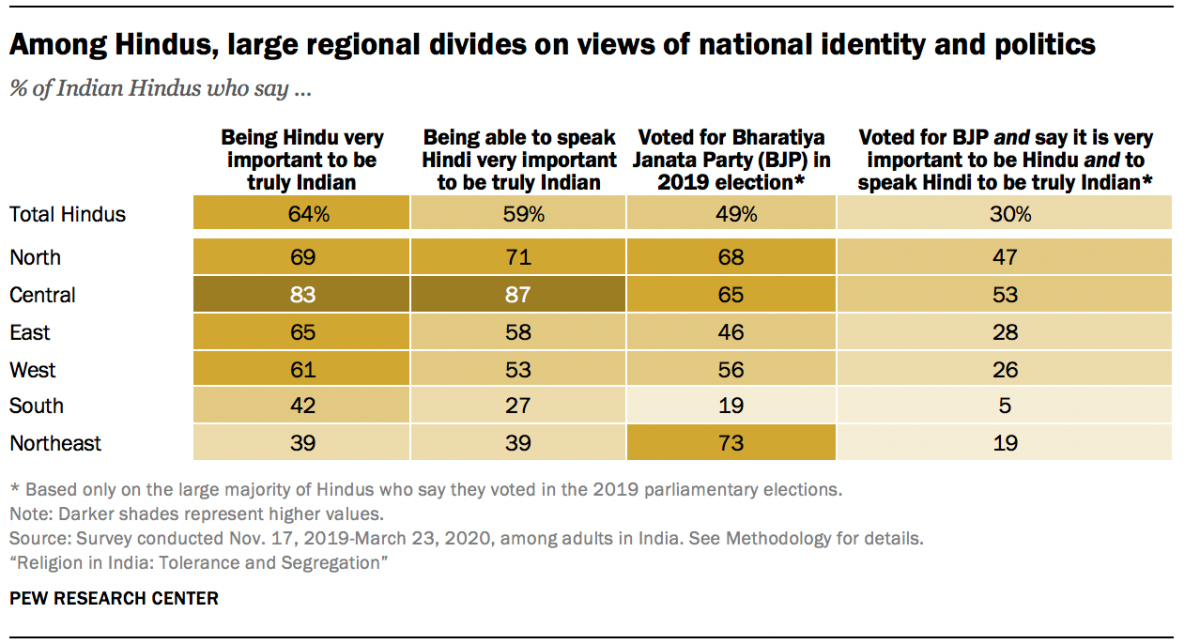 Wilbur Patterson is general secretary of a small organization called the Commission on Voluntary Service and Action (CVSA). Its main reason for being is the yearly publication of a guide for people who want to volunteer for charitable work. The guide, Invest Yourself, has been published every year since 1946 and circulates mainly to colleges and churches.Most of the 180 listings in the guide are themselves connected with mainline Protestant churches, but 38 of them, with names such as the California Homemakers Association and the Eastern Farmworkers Association, are not. Patterson began to suspect that something in his guidebook was amiss when he began receiving complaints from volunteers that some of the organizations listed in it were fronts for a clandestine political group. It seemed that the CVSA had been infiltrated by, of all things, a Marxist revolutionary party.The puzzle fell together for Patterson late in 1981 when he received a letter from Jeff Whitnack, who had been drawn into the Marxist party after offering himself as a volunteer to the San Francisco Homemakers Association. Whitnack told Patterson that the goal of this party, ridiculous as it seems, is to carry out a Marxist revolution in the United States by 1984. Patterson agonized over the implications of what he was learning. In a confidential memo to others on his executive board, Patterson asked, “What are we allowing CVSA to become, wittingly or unwittingly?”Patterson’s memo wasn’t confidential enough. The chairman of the board, a woman named Diane Ramirez, turned out to be one of the leaders of the Marxist band. According to former members, the party has several names, the most common being the “Perente party” after its mysterious leader, Eugenio Perente. Whitnack says that Perente is actually a Marysville, California born radical named Jerri Doeden. The party began in the early 1970s and is headquartered in Brooklyn. It is said to have several hundred members.Its political indoctrination consists of heavy reading in the classic Marxist revolutionary canon, supplemented by large doses of Stalin’s works. Members are expected to work long hours with few days off. They work hard at raising money, primarily by door-to-door canvassing, bake sales at shopping centers, and telephone pitches to small businesses and churches. The party is reportedly obsessed with secrecy. One view of the Perente party is that it is part of a police intelligence plot to discredit the American Left. Whitnack says the group is no more Marxist than the Unification church is Christian. He regards it as a cult, claiming that people in the midst of life crises are likely candidates for recruits. Detailed information about the party is hard to come by because its leaders refuse to return phone calls.What is clear is that sometime before 1978 members of the party began moving in on Patterson and his volunteer agency. In 1978, Invest Yourself was in financial trouble and Diane Ramirez and several of her associates offered to take over the publication. Patterson eagerly accepted. Since then, Invest Yourself has been edited by a woman named Susan Angus, under the sponsorship of something called the National Foundation for Alternative Resources (NFAR), apparently another Perente party front group.Patterson became more and more concerned about the reports he was hearing of a secret organization behind some of the groups listed in his publication, and he realized he actually did not know by whom, or even where, Invest Yourself was being printed.As he put it to other worried members of his executive committee, whoever is behind these groups “now controls [Invest Yourself] 100 percent and therefore controls 90 percent of the reputation of CVSA. And we really do not know that organization.”Patterson confronted Angus and Ramirez at the executive committee meeting last March. They denied they were part of a subversive group. At the next meeting in July, Ramirez proposed that Angus and two other associates be added to the executive committee and that Patterson be dropped. That was beaten back, but Patterson’s motion to cancel the 1983 edition of Invest Yourself was also defeated, when Ramirez broke a tie by voting to publish (some of Patterson’s supporters on the board had to leave early because of other commitments). After the July meeting, several denominations—including United Methodists, Lutherans, and Episcopalians—withdrew their listings.Finally, at the September meeting, Patterson and his colleagues acted together. They replaced Ramirez as chairman, added several new committee members to shore up CVSA’s ties to mainstream groups, and resolved to try to reclaim Invest Yourself from its infiltrators.Patterson is not sure if there will be a 1983 edition of Invest Yourself. He contends that a legal contract with the printers requires that the draft of the publication be submitted to and approved by an editorial review board. But Patterson does not expect the NFAR to honor the contract. If Invest Yourself is published in 1983, the CVSA committee may take the matter to court. Patterson is convinced the CVSA could win, but he is not sure it can afford court costs. “We have no angels to bail us out,” he said. Meanwhile, the NFAR is threatening to take Patterson and the CVSA to court to challenge Ramirez’s removal.For Patterson and other concerned members of the CVSA, the experience has been a painful one. But he takes consolation in the fact that even if it takes the destruction of the CVSA to expose the Perente party, in this the CVSA will have performed one of the more important community services of its long and creditable career.
Wilbur Patterson is general secretary of a small organization called the Commission on Voluntary Service and Action (CVSA). Its main reason for being is the yearly publication of a guide for people who want to volunteer for charitable work. The guide, Invest Yourself, has been published every year since 1946 and circulates mainly to colleges and churches.Most of the 180 listings in the guide are themselves connected with mainline Protestant churches, but 38 of them, with names such as the California Homemakers Association and the Eastern Farmworkers Association, are not. Patterson began to suspect that something in his guidebook was amiss when he began receiving complaints from volunteers that some of the organizations listed in it were fronts for a clandestine political group. It seemed that the CVSA had been infiltrated by, of all things, a Marxist revolutionary party.The puzzle fell together for Patterson late in 1981 when he received a letter from Jeff Whitnack, who had been drawn into the Marxist party after offering himself as a volunteer to the San Francisco Homemakers Association. Whitnack told Patterson that the goal of this party, ridiculous as it seems, is to carry out a Marxist revolution in the United States by 1984. Patterson agonized over the implications of what he was learning. In a confidential memo to others on his executive board, Patterson asked, “What are we allowing CVSA to become, wittingly or unwittingly?”Patterson’s memo wasn’t confidential enough. The chairman of the board, a woman named Diane Ramirez, turned out to be one of the leaders of the Marxist band. According to former members, the party has several names, the most common being the “Perente party” after its mysterious leader, Eugenio Perente. Whitnack says that Perente is actually a Marysville, California born radical named Jerri Doeden. The party began in the early 1970s and is headquartered in Brooklyn. It is said to have several hundred members.Its political indoctrination consists of heavy reading in the classic Marxist revolutionary canon, supplemented by large doses of Stalin’s works. Members are expected to work long hours with few days off. They work hard at raising money, primarily by door-to-door canvassing, bake sales at shopping centers, and telephone pitches to small businesses and churches. The party is reportedly obsessed with secrecy. One view of the Perente party is that it is part of a police intelligence plot to discredit the American Left. Whitnack says the group is no more Marxist than the Unification church is Christian. He regards it as a cult, claiming that people in the midst of life crises are likely candidates for recruits. Detailed information about the party is hard to come by because its leaders refuse to return phone calls.What is clear is that sometime before 1978 members of the party began moving in on Patterson and his volunteer agency. In 1978, Invest Yourself was in financial trouble and Diane Ramirez and several of her associates offered to take over the publication. Patterson eagerly accepted. Since then, Invest Yourself has been edited by a woman named Susan Angus, under the sponsorship of something called the National Foundation for Alternative Resources (NFAR), apparently another Perente party front group.Patterson became more and more concerned about the reports he was hearing of a secret organization behind some of the groups listed in his publication, and he realized he actually did not know by whom, or even where, Invest Yourself was being printed.As he put it to other worried members of his executive committee, whoever is behind these groups “now controls [Invest Yourself] 100 percent and therefore controls 90 percent of the reputation of CVSA. And we really do not know that organization.”Patterson confronted Angus and Ramirez at the executive committee meeting last March. They denied they were part of a subversive group. At the next meeting in July, Ramirez proposed that Angus and two other associates be added to the executive committee and that Patterson be dropped. That was beaten back, but Patterson’s motion to cancel the 1983 edition of Invest Yourself was also defeated, when Ramirez broke a tie by voting to publish (some of Patterson’s supporters on the board had to leave early because of other commitments). After the July meeting, several denominations—including United Methodists, Lutherans, and Episcopalians—withdrew their listings.Finally, at the September meeting, Patterson and his colleagues acted together. They replaced Ramirez as chairman, added several new committee members to shore up CVSA’s ties to mainstream groups, and resolved to try to reclaim Invest Yourself from its infiltrators.Patterson is not sure if there will be a 1983 edition of Invest Yourself. He contends that a legal contract with the printers requires that the draft of the publication be submitted to and approved by an editorial review board. But Patterson does not expect the NFAR to honor the contract. If Invest Yourself is published in 1983, the CVSA committee may take the matter to court. Patterson is convinced the CVSA could win, but he is not sure it can afford court costs. “We have no angels to bail us out,” he said. Meanwhile, the NFAR is threatening to take Patterson and the CVSA to court to challenge Ramirez’s removal.For Patterson and other concerned members of the CVSA, the experience has been a painful one. But he takes consolation in the fact that even if it takes the destruction of the CVSA to expose the Perente party, in this the CVSA will have performed one of the more important community services of its long and creditable career.
Yet the biggest concern for Aghamkar within Pew’s findings is “the clear trend toward Hindutva ideology” among India’s Hindu majority and the resulting impact on religious harmony. For example, attitudes toward conversion—whether Hindus becoming Christians or Christians becoming Hindus (known as “homecoming”)—seem to be aligning more with Hindutva beliefs, he said, based on how Hindus answered the report’s questions.
“I’ve had a fear that communal relations in the recent past have been deeply disturbed by the polarization of politics, and the report almost affirms that,” Aghamkar, with the National Center for Urban Transformation based in Bengaluru (formerly Bangalore), told CT. “The recent trend of mixing Hindutva with national identity is now clearly validated.”
“[More] Hindus are linking their identity with religion and politics. This was not the case earlier, as many Hindus and especially urban globalized Hindus were understood as moving away from traditional religious values that tended to [delink] them from their national identity.”
“The identity of religious faith with politics is a recent phenomenon,” said Machado. “It is ‘religion instrumentalized’ for vested interests.”
“There is a political move to exploit religious identities and create differences that can be used for gaining power,” said Samuel of EFICOR, who expects tolerance will reduce further.
Philip shares these concerns about the trends toward religious segregation and defining “true Indians” as Hindus and what both imply for communal harmony.
While the overlap Pew found on some religious beliefs and practices—such as wearing a bindi, celebrating festivals, or believing in karma and reincarnation—can be “used as bridge-building points to develop harmony,” he believes that “since tolerance is understood as segregation, ghettoing and minority targeting will be a worrying trend.”
“Harmony is now ‘social distancing,’” said Philip.
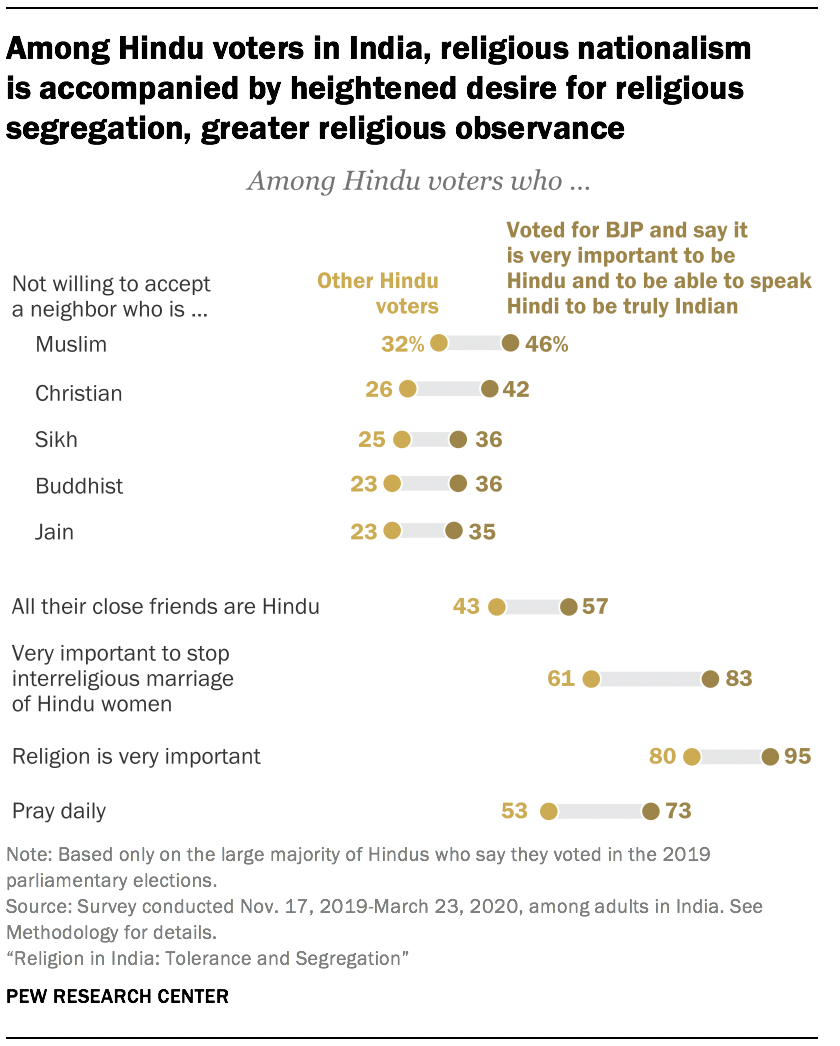
In contrast, Aghamkar expressed encouragement that most Indians “still believe in God and want to express their faith,” as well as that religious tolerance “seems to be still evident.”
“In the despondency of the day,” said Dayal, “it is encouraging to know that two-thirds of all communities want to live in peace with each other.”
While the report’s findings describe favorably the religious freedom situation in India, Christian leaders offered mixed reactions.
“The survey gives the impression that there is religious freedom for everyone to practice their faith, but this is not close to the truth,” said Philip. “The violence against the minority has increased considerably in the last 10 years.”
“I don’t think religious freedom is going to be looked at in India favorably in days to come unless some drastic political changes take place,” said Aghamkar. “International pressure would be required to bring some changes in allowing religious freedom.” He wants to see more collaborative efforts launched to “think nationally and bring pressure on the government to change certain policies that affects Christians.”
“To uphold the fundamental human right of religious freedom should be the supreme religious concern of any civilized society and every government,” said Machado. “Aberrations could be supervised, but the human right of religion is the first of all human rights because it is the supreme law of conscience of every human being.”
“The report does not come close to assessing the intensity of Hindu political hatred against Islam, the common Muslims, and their institutions,” said Dayal. “This is a critical issue in internal harmony and regional stability and peace.”
Dayal said the report “puts statistical annotations to common observations” yet wishes it could help gauge religious persecution by state and non-state actors and devise responses to challenge it. “There is urgent and pressing need to reverse the Islamophobia in governance and in public life,” he said. “There is need to devise institutions to bring communities on common platforms to discuss issues and diffuse tensions. And there is an urgent need to get religious minorities to believe that the national justice system will not sell them down the river.”
“I think the report’s optimism about religious freedom in India is right,” said Samuel of OCRPL. “I think there will always be freedom—not because of a belief in it, but due to the reality of religious diversity in India that cannot be subdued or controlled. It is too diverse and too vast for any group, however powerful, to control.”
However, he said, “the church must continue to provide a religious and moral basis for religious freedom.”
India’s religious divide and conflicts “will increase rather than decrease,” according to Samuel. “The current direction of Hinduism in India is driven by some forces that are linked to state power, which means that one form of Hindu religious nationalism will grow rapidly and is likely to clash with other forms of Hinduism and other religions.”
Yet in the area of religion itself, “India has not changed much,” he told CT. “I have seen religious suspicion and conflict for all my life. There are always pockets of cooperation and friendship between religions, but the Bollywood view of religious harmony in India is a myth and continues to be so.”
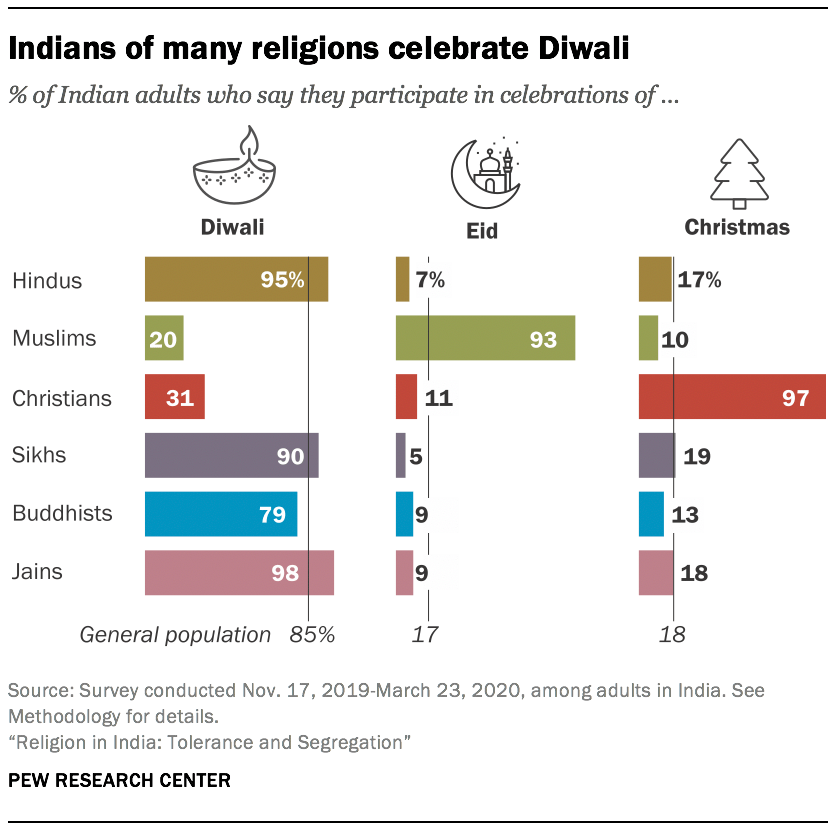 Wilbur Patterson is general secretary of a small organization called the Commission on Voluntary Service and Action (CVSA). Its main reason for being is the yearly publication of a guide for people who want to volunteer for charitable work. The guide, Invest Yourself, has been published every year since 1946 and circulates mainly to colleges and churches.Most of the 180 listings in the guide are themselves connected with mainline Protestant churches, but 38 of them, with names such as the California Homemakers Association and the Eastern Farmworkers Association, are not. Patterson began to suspect that something in his guidebook was amiss when he began receiving complaints from volunteers that some of the organizations listed in it were fronts for a clandestine political group. It seemed that the CVSA had been infiltrated by, of all things, a Marxist revolutionary party.The puzzle fell together for Patterson late in 1981 when he received a letter from Jeff Whitnack, who had been drawn into the Marxist party after offering himself as a volunteer to the San Francisco Homemakers Association. Whitnack told Patterson that the goal of this party, ridiculous as it seems, is to carry out a Marxist revolution in the United States by 1984. Patterson agonized over the implications of what he was learning. In a confidential memo to others on his executive board, Patterson asked, “What are we allowing CVSA to become, wittingly or unwittingly?”Patterson’s memo wasn’t confidential enough. The chairman of the board, a woman named Diane Ramirez, turned out to be one of the leaders of the Marxist band. According to former members, the party has several names, the most common being the “Perente party” after its mysterious leader, Eugenio Perente. Whitnack says that Perente is actually a Marysville, California born radical named Jerri Doeden. The party began in the early 1970s and is headquartered in Brooklyn. It is said to have several hundred members.Its political indoctrination consists of heavy reading in the classic Marxist revolutionary canon, supplemented by large doses of Stalin’s works. Members are expected to work long hours with few days off. They work hard at raising money, primarily by door-to-door canvassing, bake sales at shopping centers, and telephone pitches to small businesses and churches. The party is reportedly obsessed with secrecy. One view of the Perente party is that it is part of a police intelligence plot to discredit the American Left. Whitnack says the group is no more Marxist than the Unification church is Christian. He regards it as a cult, claiming that people in the midst of life crises are likely candidates for recruits. Detailed information about the party is hard to come by because its leaders refuse to return phone calls.What is clear is that sometime before 1978 members of the party began moving in on Patterson and his volunteer agency. In 1978, Invest Yourself was in financial trouble and Diane Ramirez and several of her associates offered to take over the publication. Patterson eagerly accepted. Since then, Invest Yourself has been edited by a woman named Susan Angus, under the sponsorship of something called the National Foundation for Alternative Resources (NFAR), apparently another Perente party front group.Patterson became more and more concerned about the reports he was hearing of a secret organization behind some of the groups listed in his publication, and he realized he actually did not know by whom, or even where, Invest Yourself was being printed.As he put it to other worried members of his executive committee, whoever is behind these groups “now controls [Invest Yourself] 100 percent and therefore controls 90 percent of the reputation of CVSA. And we really do not know that organization.”Patterson confronted Angus and Ramirez at the executive committee meeting last March. They denied they were part of a subversive group. At the next meeting in July, Ramirez proposed that Angus and two other associates be added to the executive committee and that Patterson be dropped. That was beaten back, but Patterson’s motion to cancel the 1983 edition of Invest Yourself was also defeated, when Ramirez broke a tie by voting to publish (some of Patterson’s supporters on the board had to leave early because of other commitments). After the July meeting, several denominations—including United Methodists, Lutherans, and Episcopalians—withdrew their listings.Finally, at the September meeting, Patterson and his colleagues acted together. They replaced Ramirez as chairman, added several new committee members to shore up CVSA’s ties to mainstream groups, and resolved to try to reclaim Invest Yourself from its infiltrators.Patterson is not sure if there will be a 1983 edition of Invest Yourself. He contends that a legal contract with the printers requires that the draft of the publication be submitted to and approved by an editorial review board. But Patterson does not expect the NFAR to honor the contract. If Invest Yourself is published in 1983, the CVSA committee may take the matter to court. Patterson is convinced the CVSA could win, but he is not sure it can afford court costs. “We have no angels to bail us out,” he said. Meanwhile, the NFAR is threatening to take Patterson and the CVSA to court to challenge Ramirez’s removal.For Patterson and other concerned members of the CVSA, the experience has been a painful one. But he takes consolation in the fact that even if it takes the destruction of the CVSA to expose the Perente party, in this the CVSA will have performed one of the more important community services of its long and creditable career.
Wilbur Patterson is general secretary of a small organization called the Commission on Voluntary Service and Action (CVSA). Its main reason for being is the yearly publication of a guide for people who want to volunteer for charitable work. The guide, Invest Yourself, has been published every year since 1946 and circulates mainly to colleges and churches.Most of the 180 listings in the guide are themselves connected with mainline Protestant churches, but 38 of them, with names such as the California Homemakers Association and the Eastern Farmworkers Association, are not. Patterson began to suspect that something in his guidebook was amiss when he began receiving complaints from volunteers that some of the organizations listed in it were fronts for a clandestine political group. It seemed that the CVSA had been infiltrated by, of all things, a Marxist revolutionary party.The puzzle fell together for Patterson late in 1981 when he received a letter from Jeff Whitnack, who had been drawn into the Marxist party after offering himself as a volunteer to the San Francisco Homemakers Association. Whitnack told Patterson that the goal of this party, ridiculous as it seems, is to carry out a Marxist revolution in the United States by 1984. Patterson agonized over the implications of what he was learning. In a confidential memo to others on his executive board, Patterson asked, “What are we allowing CVSA to become, wittingly or unwittingly?”Patterson’s memo wasn’t confidential enough. The chairman of the board, a woman named Diane Ramirez, turned out to be one of the leaders of the Marxist band. According to former members, the party has several names, the most common being the “Perente party” after its mysterious leader, Eugenio Perente. Whitnack says that Perente is actually a Marysville, California born radical named Jerri Doeden. The party began in the early 1970s and is headquartered in Brooklyn. It is said to have several hundred members.Its political indoctrination consists of heavy reading in the classic Marxist revolutionary canon, supplemented by large doses of Stalin’s works. Members are expected to work long hours with few days off. They work hard at raising money, primarily by door-to-door canvassing, bake sales at shopping centers, and telephone pitches to small businesses and churches. The party is reportedly obsessed with secrecy. One view of the Perente party is that it is part of a police intelligence plot to discredit the American Left. Whitnack says the group is no more Marxist than the Unification church is Christian. He regards it as a cult, claiming that people in the midst of life crises are likely candidates for recruits. Detailed information about the party is hard to come by because its leaders refuse to return phone calls.What is clear is that sometime before 1978 members of the party began moving in on Patterson and his volunteer agency. In 1978, Invest Yourself was in financial trouble and Diane Ramirez and several of her associates offered to take over the publication. Patterson eagerly accepted. Since then, Invest Yourself has been edited by a woman named Susan Angus, under the sponsorship of something called the National Foundation for Alternative Resources (NFAR), apparently another Perente party front group.Patterson became more and more concerned about the reports he was hearing of a secret organization behind some of the groups listed in his publication, and he realized he actually did not know by whom, or even where, Invest Yourself was being printed.As he put it to other worried members of his executive committee, whoever is behind these groups “now controls [Invest Yourself] 100 percent and therefore controls 90 percent of the reputation of CVSA. And we really do not know that organization.”Patterson confronted Angus and Ramirez at the executive committee meeting last March. They denied they were part of a subversive group. At the next meeting in July, Ramirez proposed that Angus and two other associates be added to the executive committee and that Patterson be dropped. That was beaten back, but Patterson’s motion to cancel the 1983 edition of Invest Yourself was also defeated, when Ramirez broke a tie by voting to publish (some of Patterson’s supporters on the board had to leave early because of other commitments). After the July meeting, several denominations—including United Methodists, Lutherans, and Episcopalians—withdrew their listings.Finally, at the September meeting, Patterson and his colleagues acted together. They replaced Ramirez as chairman, added several new committee members to shore up CVSA’s ties to mainstream groups, and resolved to try to reclaim Invest Yourself from its infiltrators.Patterson is not sure if there will be a 1983 edition of Invest Yourself. He contends that a legal contract with the printers requires that the draft of the publication be submitted to and approved by an editorial review board. But Patterson does not expect the NFAR to honor the contract. If Invest Yourself is published in 1983, the CVSA committee may take the matter to court. Patterson is convinced the CVSA could win, but he is not sure it can afford court costs. “We have no angels to bail us out,” he said. Meanwhile, the NFAR is threatening to take Patterson and the CVSA to court to challenge Ramirez’s removal.For Patterson and other concerned members of the CVSA, the experience has been a painful one. But he takes consolation in the fact that even if it takes the destruction of the CVSA to expose the Perente party, in this the CVSA will have performed one of the more important community services of its long and creditable career.
How might Indian Christians respond to this examination of religion in India?
“Being a minority, the church needs to take bold steps in bringing harmony,” said Philip. “The church has a great history of serving and building the nation through educational and medical missions. These core missions of the church can bring transformation to a disintegrated country along religious lines.”
“Some careful and prayerful reflections are required of the church in India, and innovative and contextually appropriate ways may need to be explored to move forward with witnessing in India,” said Aghamkar. “Taking into consideration those who do not agree with Hindutva ideology … may need to be taken into consideration for Christian witness, as these are the ones that are so called ‘open segments.’”
Samuel of EFICOR wants Christians to “intentionally become visible in doing good.”
“The faithful are led by their pastor, bishop, or cardinal. … That makes it incumbent on the church and community leadership not to fall prey to the evil of bigotry, which many do, and of caste,” said Dayal. “It is also important for many churches to shed their preconceptions which are born of ignorance or insufficient knowledge and training in cultural demography.
“A better understanding of the cultural landscape will help,” he said. “The survey makes it clear.”
Overall, Indian Christian leaders ask for prayer.
“The first item on our prayer list must be regional peace for India,” said Dayal. “Its religious peace depends on its relationship with Pakistan, for instance.
“The second item must be for wisdom for our leadership to forsake a policy of polarization, and for restoration and strengthening of democratic institutions and [the courts],” he told CT. “The third item must be for intercommunal peace and harmony through the dialogue of life and in the framework of a just and secular, democratic, constitutional justice system.
“The final item must be for wisdom and grace to Christian leaders to discern what is good for the people,” said Dayal, “and to constrict their evangelism, their social action programs, and their teaching curricula in accordance.”
Philip also offered four prayer points:
Pray for wisdom for the leaders of India to develop a unified identity incorporating all communities amid growing segregation. Pray against the “fear of the majority” that the minority will convert the majority to their beliefs and practices. That the government will intentionally work towards communal harmony of various religious groups. That the church will become a wonderful expression of unity and harmony in the nation.
“We need to be consciously praying for the clarity, direction, and cooperation within the leadership of the church to move forward and find specific ways to build the kingdom of God in India,” said Aghamkar.
Additional reporting by CT editors

